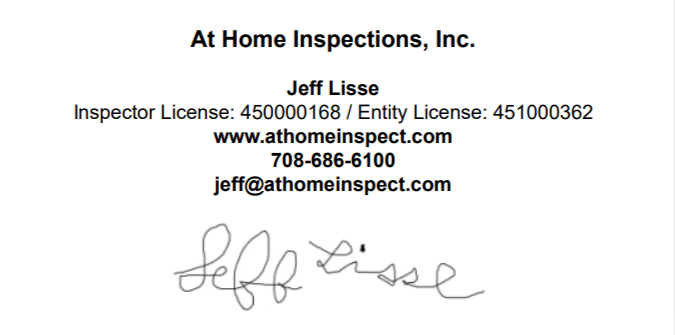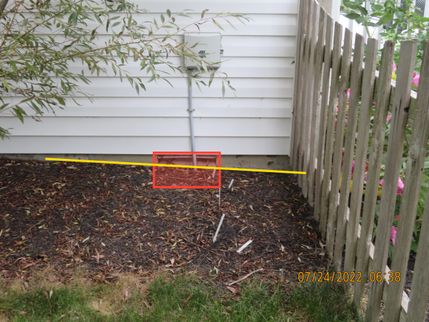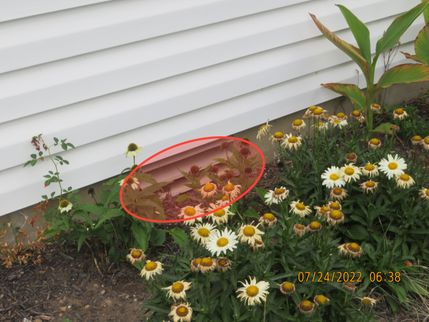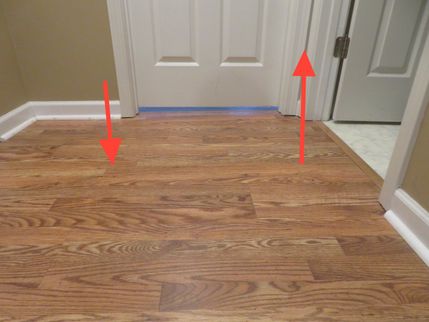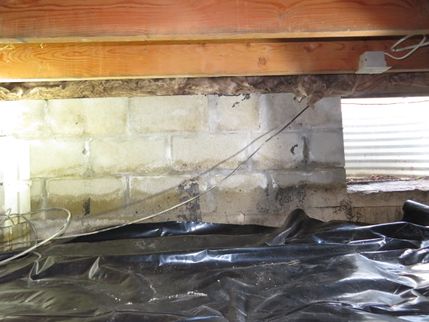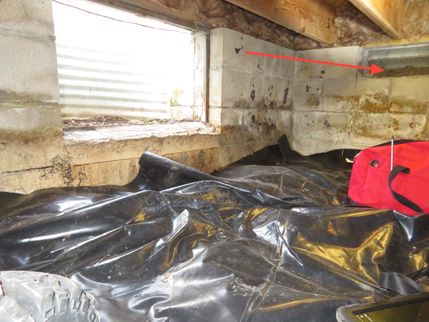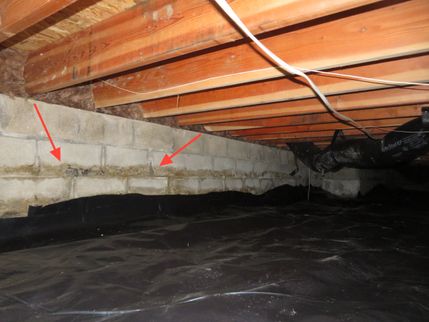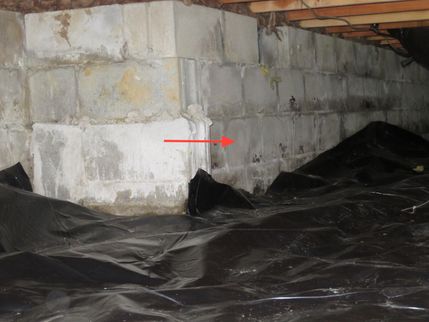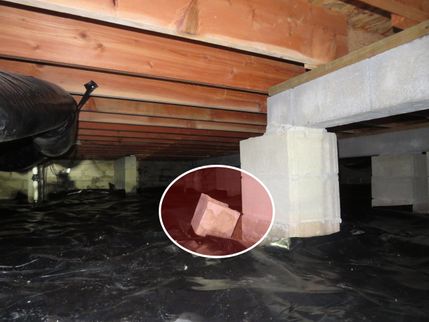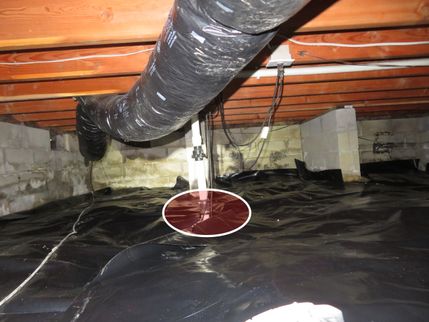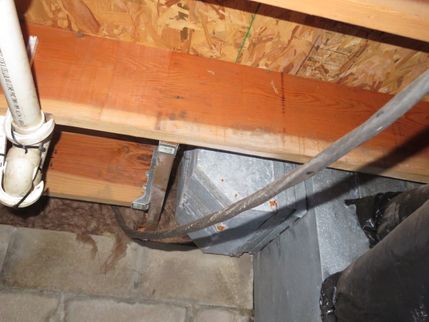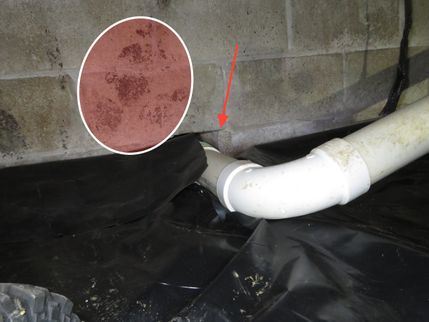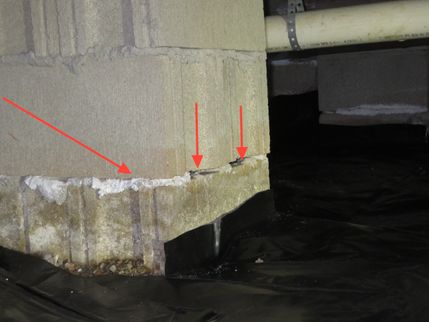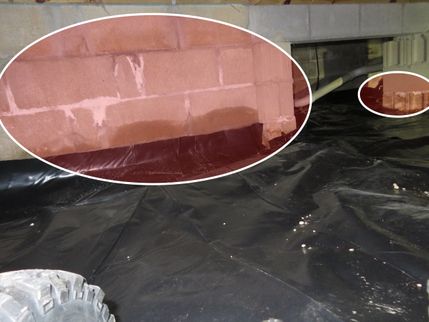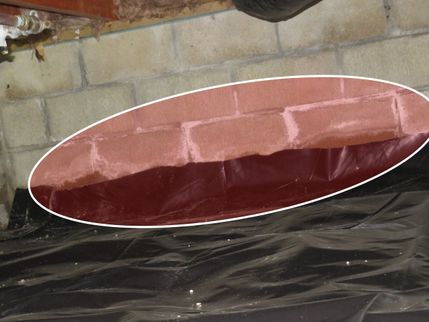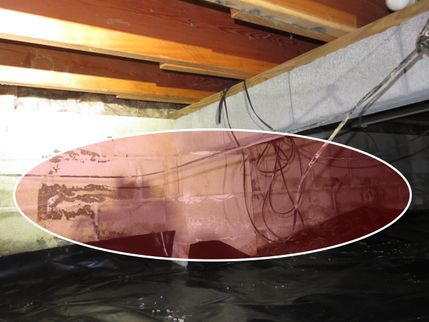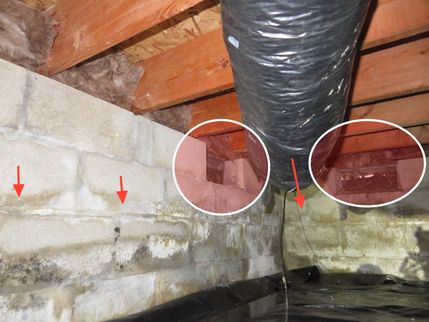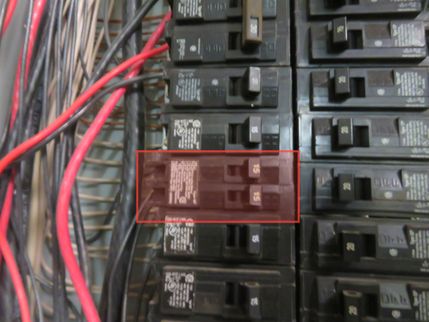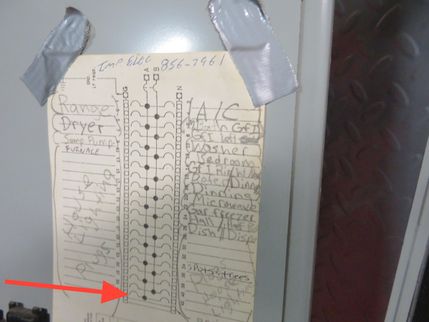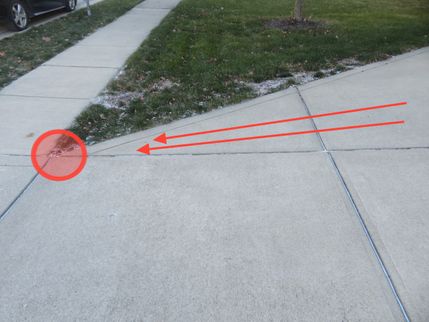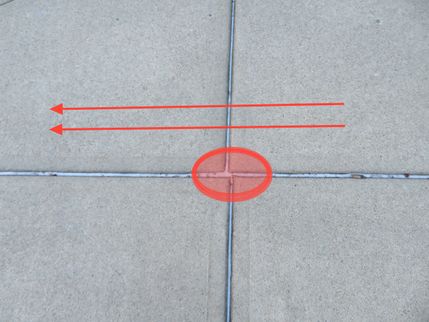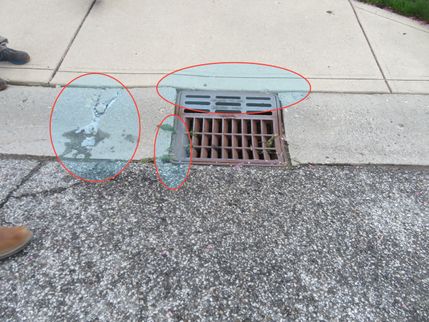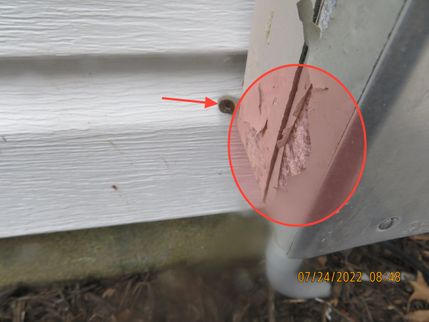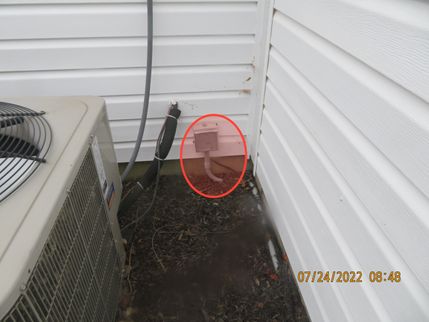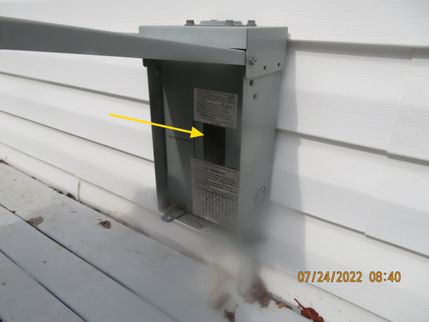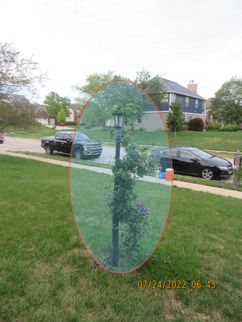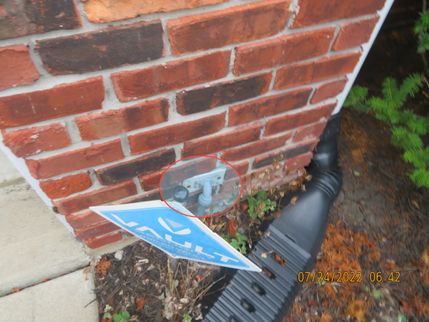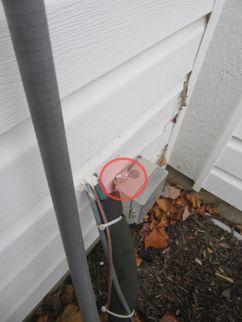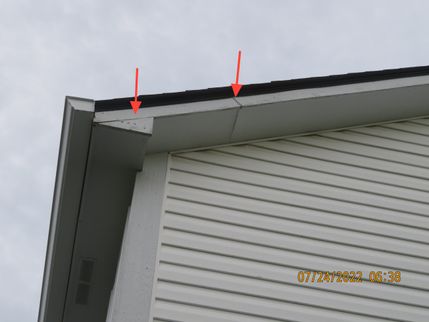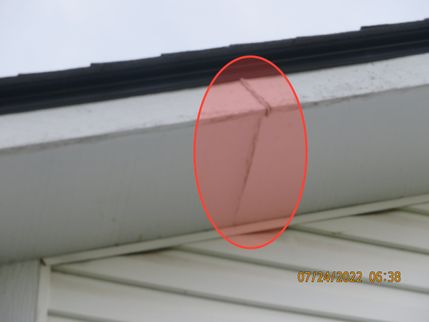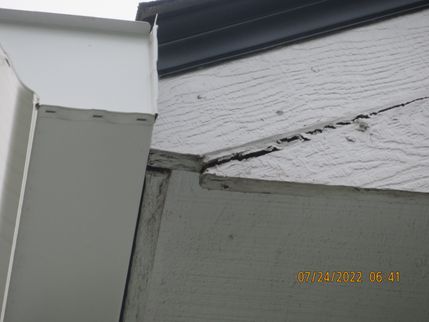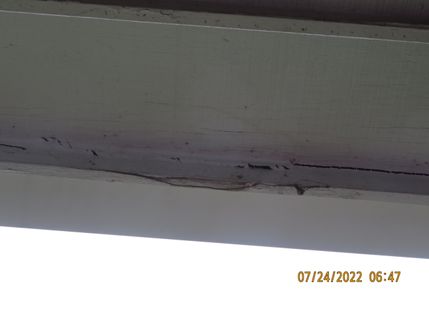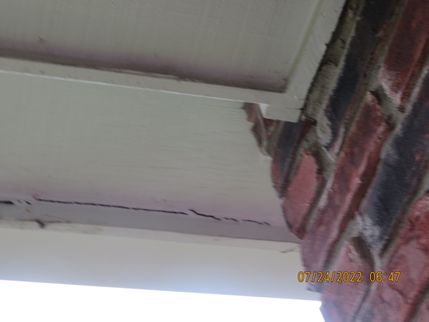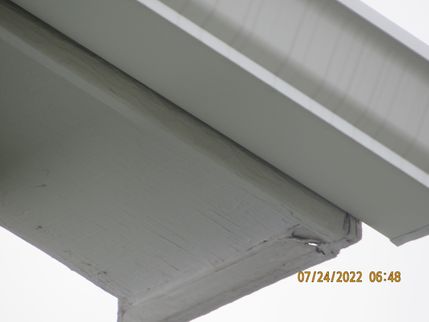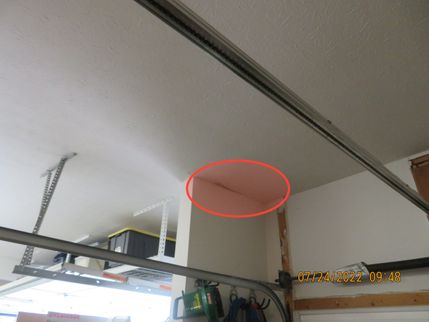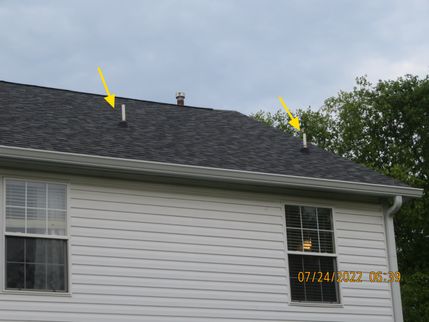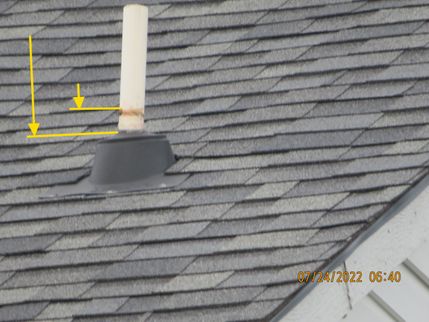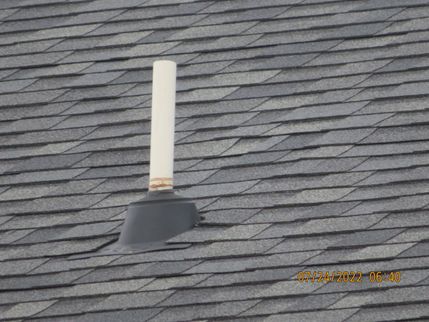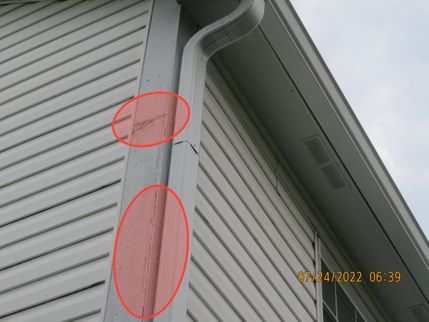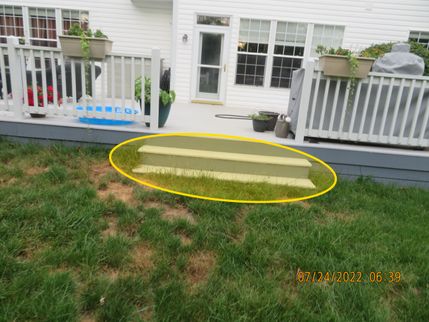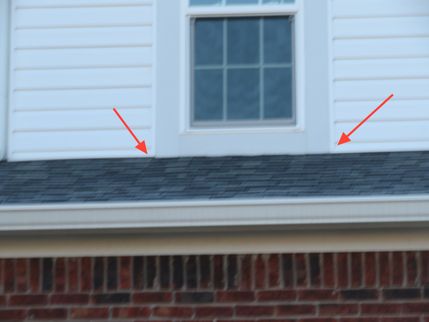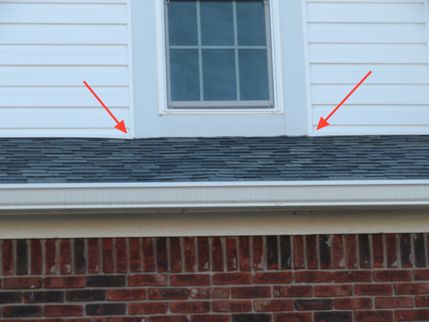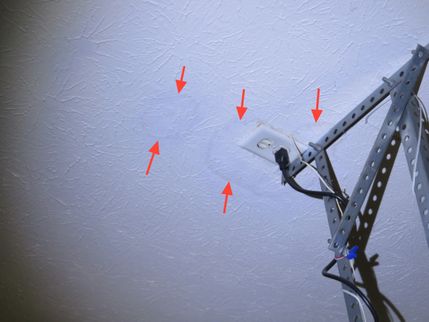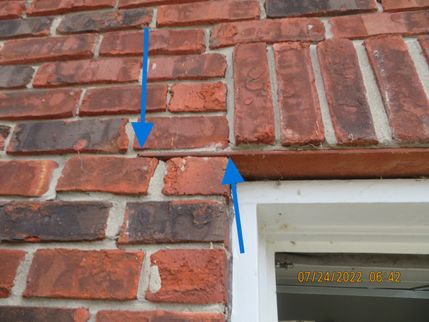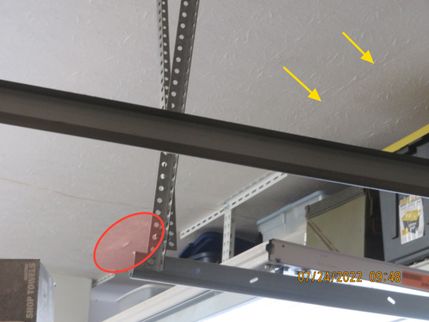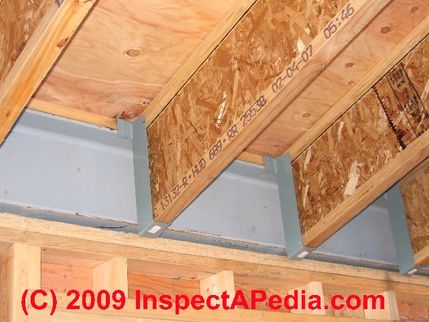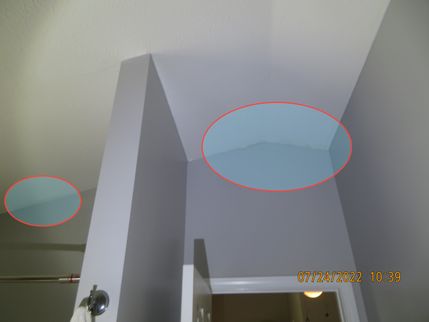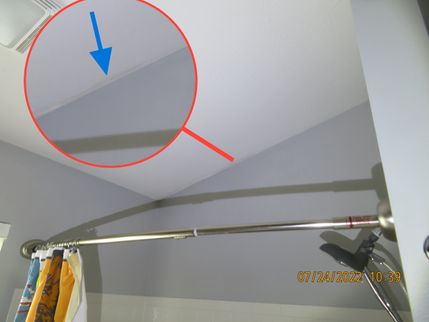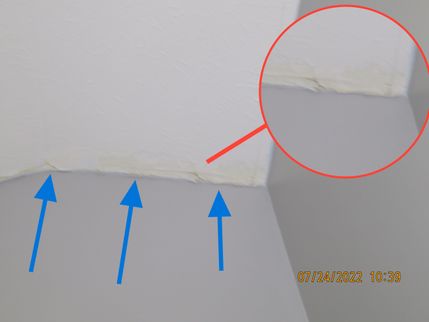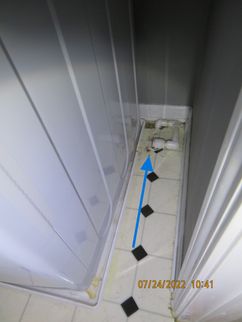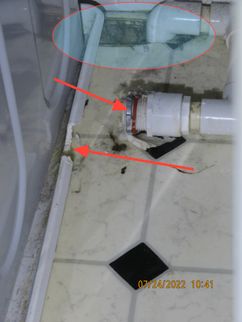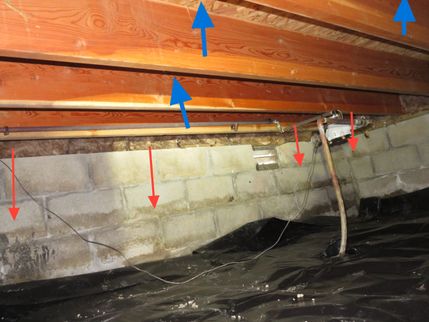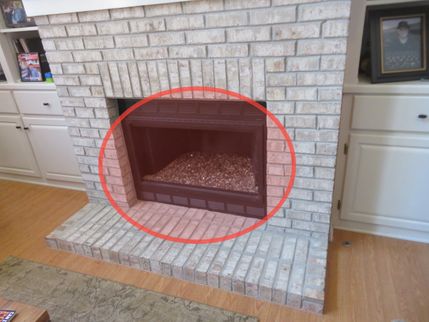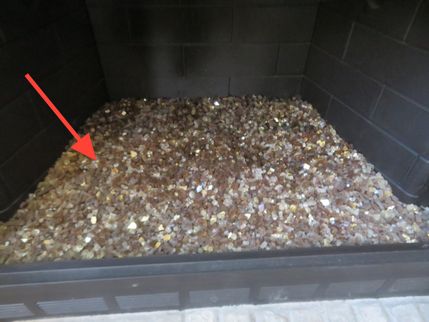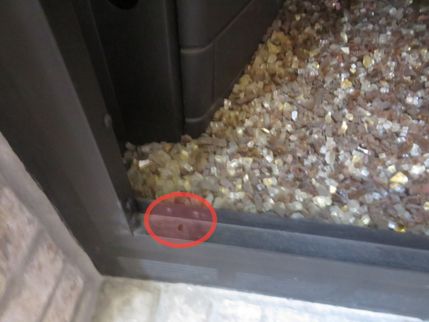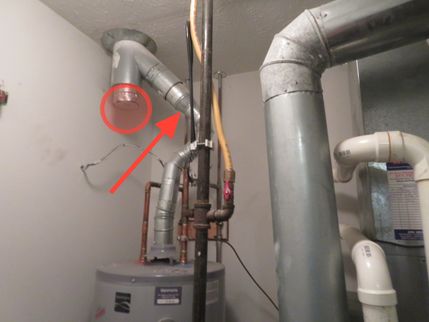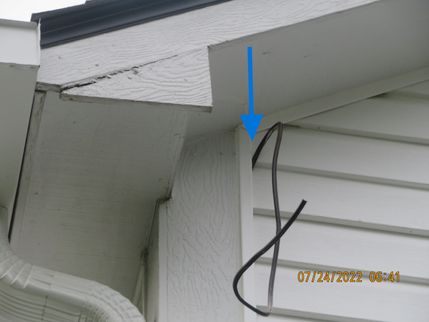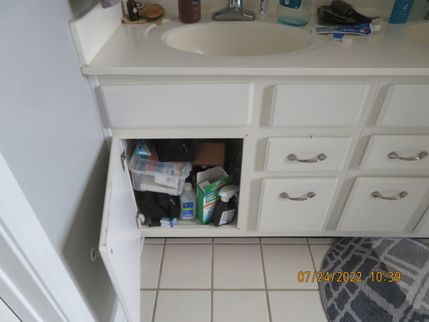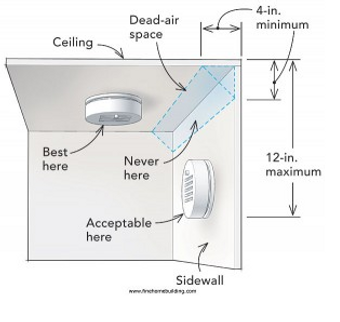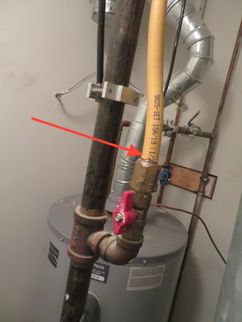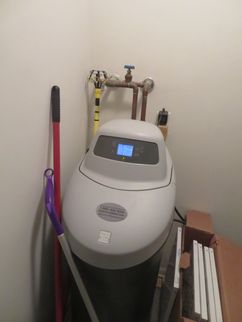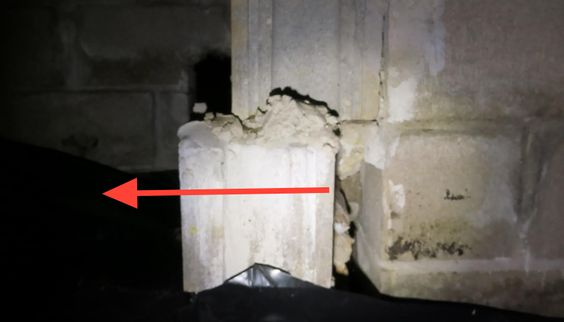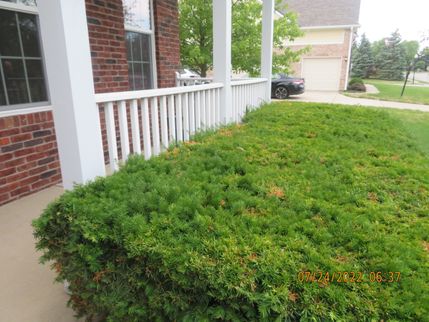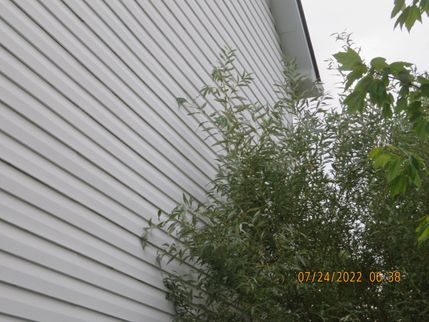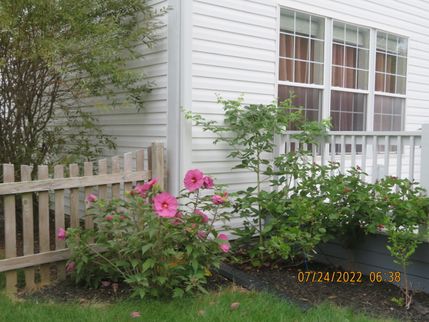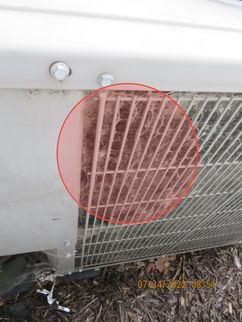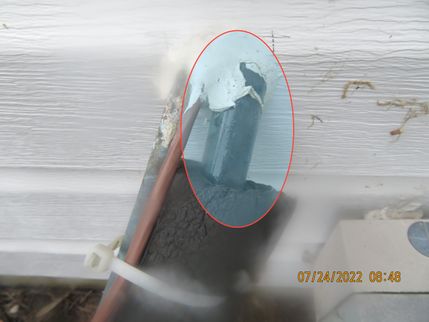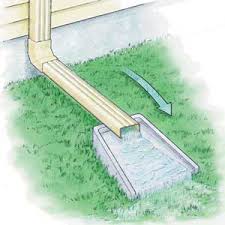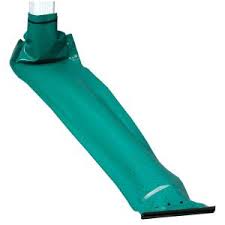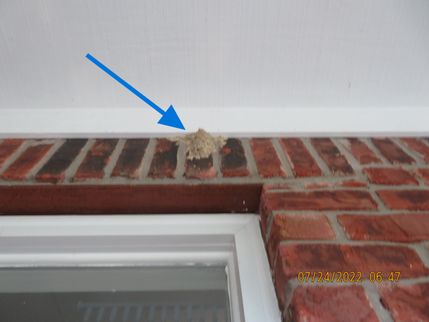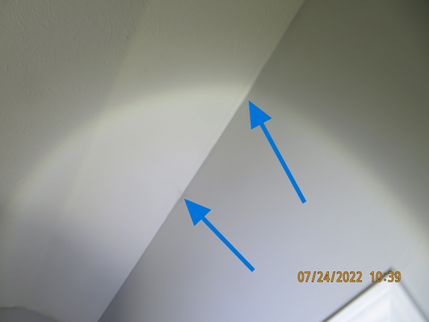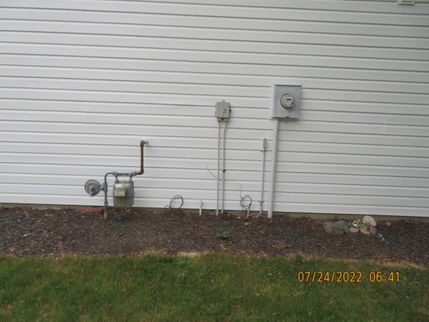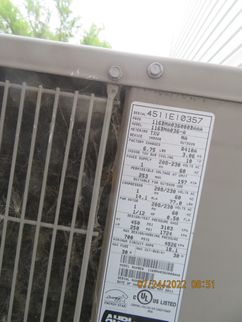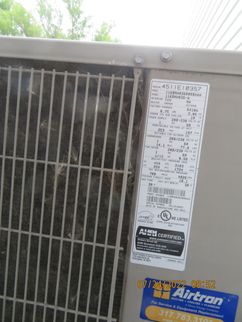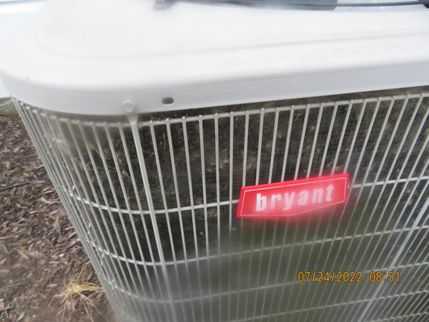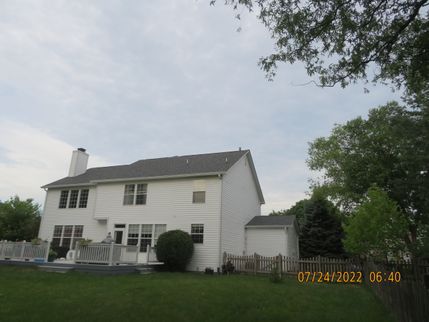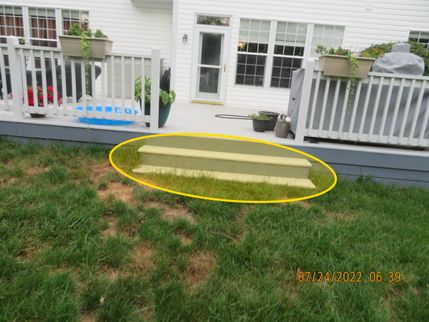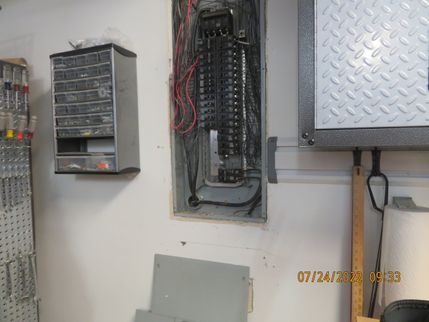How to Read This Report
The report is in a format that allows you to get to specific information quickly. Your report will have defects, concerns, general information, and things you should look into further. When looking at the report you have many different ways the information can be organized. Here are some examples of ways you can look at the report:
- The report comes up in an internet format called HTML. This is organized and I (your inspector) have tried to prioritize the information for you. For example, in the report if you click on the words "Significantly Deficient" on the left side of your screen you will see only the items I have marked as significantly deficient. This is very useful but please keep in mind my prioritization is my best guess and you should also look at the full report. In the HTML format you can quickly jump around the report but any summary you are looking at will have information removed. You may also see comments in a summary that does not have any photos but does have photos if you look at the full report. Failure to read the full report may result in damages that could have been avoided.
- Paper / printed / PDF report. From the HTML report, at the top you have an option to print the full report via PDF. This is a printed version. You can view the full report in PDF format on your computer. You can also print the full report and read it on paper. If you want the full report, please make sure you are printing the full report and not a summary with limited information. Reading the full report is the best way to make sure you do not miss any important information that is in the report. Please note, I make every effort to include information I think is relevant. If we discussed anything that did not get into the report or if any information is different than you expected please contact me as soon as possible. I may be able to direct you to the correct location on the report or make modifications to the report so it better meets your specific needs.
- Repair Request: This is a very useful tool that can be used for many purposes. You can select items from the report to make your own list. You can include photos or not include photos. You can add your own comments to the comments and photos in the report. This allows you to go through your report and make a custom list. This can be a specific list of issues or concerns you would like addressed. Because you can add your own notes you can specify how you would prefer the issues to be taken care of. For example, for some items you could request a qualified person to repair before closing and for other items you could ask for some form of compensation to allow you to conduct repairs after closing. Agents or attorneys could generate a repair request on the clients behalf as well. Just forward your report to your representative as needed and let them know about the repair request feature. Here is a video about it: https://www.youtube.com/watch?v=IpSxVo-fiqk&t=11s.
Chapters and Sections
This report is divided into chapters. Each chapter is broken into sections. You can navigate between chapters with the click of a button on the left side margin.
Sections have descriptive information and observations.
Observation Labels
Narrative observations are colored, numbered and labeled to help you find and refer to them. Observation colors and labels used in this report are:
- Significantly Deficient:"Significantly deficient" means that in my opinion the condition is unsafe, not functional, and or it is significantly different from normal standards of practice. For all issues that are significantly deficient I strongly recommend having qualified contractors specify steps and costs to remedy the conditions. Note, there are often multiple options that impact the intrusiveness, cost, and schedule for repairs.
- Repair:Repair is used to designate anything that the inspector thinks should be repaired, replaced, or mitigated in some way. In the inspectors opinion these concerns should be addressed. These may have safety and functionality impacts. Impacts may develop or worsen in the future. There are risks associated with items that need repair or maintenance. Items might be worse than they looked at time of inspection as things change and as more information becomes available. The person purchasing the property should decide what to ask the current owner for. Please note, your inspectors opinion of who should repair which items may be offered as a courtesy and should not be considered as part of the inspection or part of the purpose and scope of the inspection.
- Due Diligence:These are observations that may require further investigation. For example the inspection does not include identification of hazardous materials. I may point out a material or product that could be hazardous. To confirm if there is a hazard would require a specialist, samples taken, a lab, and permission from the current owner. All of those actions are outside of the scope of a standard inspection. Observations in this category are typically outside the scope of a standard inspection and should not be considered complete or material to the inspection. These observations should be considered unverified.
- Report Update:This inspection report is a snapshot in time. Updates to a report may be documented in this category. This can occur after any of the following situations: -The inspector returns to the property for any reason after initial inspection. -More information becomes available after the initial report was published. -Conditions change after the inspection and the inspector is contracted to make additions to the report. -The inspector can also use this category to document their assessment of repairs done after initial inspection or to document and correct a mistake in the report. Please note, additional visits to the property and or updates to reports cause additional charges. Observations in this category are outside the scope of a standard inspection and should not be considered complete or material to the inspection. Please note, inspectors, like everyone else do make mistakes.
- Maintenance:These are items that should be considered part of normal or routine home ownership activities. Items such as servicing the furnace, cleaning the gutters, or changing filters. These items are not required to be reported as part of the standard inspection. There will be similar items that are not included, not noted, and not reported. Please read manuals and product documentation for all components of the home. Please follow all manufacturers recommendations and all local, county, and state rules. Observations in this category are typically outside the scope of a standard inspection and should not be considered complete or material to the inspection.
- Improvement or Upgrade:This category is for observations that are not necessarily defects, but which could be improved for safety, efficiency, or reliability. One reason this may happen is because standards change (both written and informal standards). These conditions may be considered normal or common practice. Common conditions and common practices that are not best practice do have negative impacts. When any work is done I recommend upgrading to current standards where feasible to do so. This category may be used for items that the inspector considers to be cosmetic. Please note, these observations are outside the required standards for home inspection. I provide these comments as a courtesy. These observations should not be considered complete or material to the inspection.
- Note:Refers to aside information and or any comments elaborating on descriptions of systems or limitations to the inspection. This can include general information This the information may not apply directly to the inspected property. This information is not directly part of the property inspection and should not be considered complete. Observations in this category are often outside the scope of a standard inspection and should not be considered complete or material to the inspection.
- Inspectors Notebook:These are notes and technical information that aid in the inspection process. I may leave such information in the report for reference purposes. These notes include technical information. These notes may have information from codes and other sources. Please note, this inspection is NOT a code inspection. It is NOT a compliance inspection. Please consult with the authority having jurisdiction for rules, laws, and local requirements. This report is the inspectors opinion and recommendations. Acting as a home inspector I do not represent the authority having jurisdiction. Acting as a home inspector I have no enforcement authority.
Examples Of Icons Used In This Report:
 Safety Concern
Safety Concern
Safety concerns are noted throughout the report without this icon. This icon is just a way for me to call your attention to specific items that have safety concerns. Many items will have safety concerns that do not get this icon added.
 Possible Association Issue
Possible Association Issue
When inspecting one unit of a multi-family property (condominiums and townhouses), I am not inspecting the outside or common areas as part of the inspection. I do not know for sure what issues are handled by an association and which are handled by owners. I can use this icon to point out things that may be the responsibility of an association. Common areas and areas that appear to be maintained by the association or their contractors are outside the scope of the inspection. I may report some association issues, this does not obligate me to report others. All comments marked this way should be considered incomplete.
 Report Update
Report Update
The report update icon can be used for different reasons. Any kind of correction or clarification to the report after initial publishing should get marked with this icon to indicate the change. Changes can happen because of a mistake, because more information has been uncovered, or as a result of an additional visit.
 Repairs Noted
Repairs Noted
Often best practice repairs are not visible or are very difficult to detect. This icon may be used to call your attention to a visible or noted repairs. For all repairs it is best for the new owner to get all available information from the current owner, including contact information for the person who did the repair. For past repairs it is wise to confirm the qualifications of the contractors that did the work. This is outside of the scope of the inspection but I do recommend that you follow up regarding all past repairs.
 Suspect Repairs
Suspect Repairs
Suspect repairs are repairs that do not appear to have been done following normal standards of practice. Repairs that are not done well are likely to cause issues in the future. For all repairs it is best for the new owner to get all available information from the current owner, including contact information for the person who did the repair. For suspect repairs it is best to have these reviewed further by qualified contractors.
 Pest Concern
Pest Concern
Pest concerns are noted as a courtesy and are not included as part of the inspection. All pest concerns (noted and otherwise) should be reviewed further by a qualified pest specialist. Any information provided regarding pest activity or pest damage should be considered incomplete.
 Maintenance
Maintenance
Maintenance considerations are noted as a courtesy and are not included as part of the inspection. Maintenance should be anticipated as part of any property ownership. This should be expected and the inspection is no attempt to capture maintenance considerations. All maintenance related comments should be considered incomplete.
 Monitor
Monitor
Monitor is used to indicate that in my opinion (in the inspector's opinion) the condition or conditions should be monitored. Please note, any item that I am recommending to monitor may also need repair or may develop the need for repairs at a future time.
 Due Diligence
Due Diligence
Due diligence indicates something that the client should consider getting more information about. Actions you can pursue include asking the current owner, consulting with qualified specialists to review further, and getting documentation and permits. For any item I mark as due diligence I am indicating that the information I have provided is incomplete. For example, if I were to find some electrical issues and mark these as due diligence it indicates that I am concerned that once a qualified electrician starts repairs they may find additional issues I did not note in the report. This is normal and should be expected when any qualified contractor is brought in to review further, repair, or replace anything.
 Note
Note
Notes are meant to convey general information. Notes can be used for many different purposes. Conditions that are outside the scope of the inspection may be listed as notes. This does not mean these are not important considerations or that no issues were found. As an example, if something is suspected of being mold but has not been confirmed or if something is suspected to contain asbestos but has not been confirmed these items may get marked as deficiencies to call attention to them. However, I may mark these items just as notes or due diligence because the deficiency is only suspected and not confirmed. It is the clients responsibility to read the entire report and pursue all issues as needed in a timely fashion. I do not take any responsibility for prioritization. You must decide what issues are important for you and your family regardless of how I classify, organize, or prioritize.
🌲 Efficiency / IAQ
Efficiency and IAQ (Indoor Air Quality) indicates issues found that are likely to change seasonally. These issues impact fuel costs and also may cause condensation, water damaged, mold growth, or similar air quality issues.
Definitions And Limitations
Home Inspection:
- This definition is from the standard operating procedures as defined in Indiana residential inspection licensing law and or administrative code. For all inspections I am following state laws. However, this does not prevent exclusions. Any item marked as not inspected has been removed from the scope of the inspection. When agreed upon with the client, entire systems can be removed from the inspection and common areas are excluded for any single unit inspections in a multi-family property.
- IC 25-20.2-2-6 "Home inspection"
- Sec. 6. "Home inspection" means a visual analysis for the purpose of providing a professional opinion of the condition of a residential dwelling and the dwelling's carports or garages, any reasonably accessible installed components, and the operation of the dwelling's systems, including any controls normally operated by the owner of the dwelling, for the following components:
- Heating systems.
- Cooling systems.
- Electrical systems.
- Plumbing systems.
- Structural components.
- Foundations.
- Roof coverings.
- Exterior and interior components.
- Attic spaces.
- Basement or crawl space, if any.
- Any other site aspects that affect the residential dwelling.
- The term does not include a code compliance inspection.
As added by P.L.145-2003, SEC.7. Amended by P.L.163-2014, SEC.1.
Standard Inspection, Residential Inspection, Property Inspection, And Similar Terms:
- Throughout this report standard inspection, residential inspection, property inspection, residential property inspection, and similar terms are to be considered to have the same definition as home inspection (above).
Home Inspection Report:
- IC 25-20.2-2-7 "Home inspection report"
- Sec. 7. "Home inspection report" means a legibly written report prepared for compensation and issued after a home inspection. The report must include the following:
- A report on any system or component inspected that, in the professional opinion of the inspector, is significantly deficient or near the end of the system or component's service life. A report under this subdivision must include the reason why the system or component is significantly deficient or near the end of the system or component's service life, unless the reason is self-evident.
- The inspector's recommendation to remedy or monitor a deficiency reported under subdivision (1).
- A list of any systems or components that were designated for inspection in the standards of performance adopted by the board but that were not inspected.
- The reason a system or component listed under subdivision (3) was not inspected.
- A statement that the report does not address environmental hazards, including: (A) lead-based paint; (B) radon; (C) asbestos; (D) cockroaches; (E) rodents; (F) pesticides; (G) treated lumber; (H) mold; (I) mercury; (J) carbon monoxide; or (K) other similar environmental hazards. (6) A statement that the report does not address wood destroying insects and organisms. (7) A statement that the report does not address subterranean systems or system components (operational or nonoperational), including: (A) sewage disposal; (B) water supply; or (C) fuel storage or delivery.
As added by P.L.145-2003, SEC.7.
Limit Of Liability:
- The limit of liability regarding any questions, concerns, or issues of any kind arising from the usage of this report or reliance on any information provided as part of the inspection is limited to the fee paid for the inspection.
Client Or Customer:
- IC 25-20.2-2-5 "Client"
- Sec. 5. "Client" means an individual who hires or seeks to hire a licensed home inspector to obtain a home inspection or home inspection report.
As added by P.L.145-2003, SEC.7.
Report Is Not Transferable:
- This report is not transferable: Other than the inspector, inspection company, and its representatives, only the specific party or parties listed as the customer / client can use this report for any reason.
Alarm Systems:
- 878 IAC 1-1-2 "Alarm systems" defined Authority: IC 25-20.2-3-8 Affected: IC 25-20.2
- Sec. 2. "Alarm systems" means warning devices, installed or freestanding, including, but not limited to, the following:
- Carbon monoxide detectors.
- Flue gas and other spillage detectors.
- Security equipment.
- Ejector pumps.
- Smoke alarms.
(Home Inspectors Licensing Board; 878 IAC 1-1-2; filed Apr 18, 2005, 12:15 p.m.: 28 IR 2719; readopted filed Nov 22, 2011, 12:20 p.m.: 20111221-IR-878110371RFA; readopted filed Dec 1, 2017, 1:54 p.m.: 20171227-IR-878170406RFA)
Component:
- 878 IAC 1-1-5 "Component" defined Authority: IC 25-20.2-3-8 Affected: IC 25-20.2
- Sec. 5. "Component" means a readily accessible and observable aspect of a system.
(Home Inspectors Licensing Board; 878 IAC 1-1-5; filed Apr 18, 2005, 12:15 p.m.: 28 IR 2719; readopted filed Nov 22, 2011, 12:20 p.m.: 20111221-IR-878110371RFA; readopted filed Dec 1, 2017, 1:54 p.m.: 20171227-IR-878170406RFA)
Decorative:
- 878 IAC 1-1-6 "Decorative" defined Authority: IC 25-20.2-3-8 Affected: IC 25-20.2
- Sec. 6. "Decorative" means an item that is not required for the operation of the essential systems and components of a home.
(Home Inspectors Licensing Board; 878 IAC 1-1-6; filed Apr 18, 2005, 12:15 p.m.: 28 IR 2719; readopted filed Nov 22, 2011, 12:20 p.m.: 20111221-IR-878110371RFA; readopted filed Dec 1, 2017, 1:54 p.m.: 20171227-IR-878170406RFA)
Dismantle:
- 878 IAC 1-1-7 "Dismantle" defined Authority: IC 25-20.2-3-8 Affected: IC 25-20.2
- Sec. 7. "Dismantle" means to take apart or remove any component, device, or piece of equipment that would not be taken apart or removed by a homeowner in the course of normal and routine homeowner maintenance.
(Home Inspectors Licensing Board; 878 IAC 1-1-7; filed Apr 18, 2005, 12:15 p.m.: 28 IR 2719; readopted filed Nov 22, 2011, 12:20 p.m.: 20111221-IR878110371RFA; readopted filed Dec 1, 2017, 1:54 p.m.: 20171227-IR878170406RFA)
Further Evaluation:
- 878 IAC 1-1-9 "Further evaluation" defined Authority: IC 25-20.2-3-8 Affected: IC 25-20.2
- Sec. 9. "Further evaluation" means examination and analysis by a qualified professional, tradesman, or service technician beyond that provided by the home inspection.
(Home Inspectors Licensing Board; 878 IAC 1-1-9; filed Apr 18, 2005, 12:15 p.m.: 28 IR 2719; readopted filed Nov 22, 2011, 12:20 p.m.: 20111221-IR878110371RFA; readopted filed Dec 1, 2017, 1:54 p.m.: 20171227-IR-878170406RFA)
Installed:
- 878 IAC 1-1-10 "Installed" defined Authority: IC 25-20.2-3-8 Affected: IC 25-20.2 Sec. 10.
- "Installed" means attached such that removal requires tools.
(Home Inspectors Licensing Board; 878 IAC 1-1-10; filed Apr 18, 2005, 12:15 p.m.: 28 IR 2719; readopted filed Nov 22, 2011, 12:20 p.m.: 20111221-IR-878110371RFA; readopted filed Dec 1, 2017, 1:54 p.m.: 20171227-IR-878170406RFA)
Normal Operating Controls:
- 878 IAC 1-1-11 "Normal operating controls" defined Authority: IC 25-20.2-3-8 Affected: IC 25-20.2
- Sec. 11. "Normal operating controls" means devices, such as thermostats, switches, or valves, intended to be operated by the homeowner.
(Home Inspectors Licensing Board; 878 IAC 1-1-11; filed Apr 18, 2005, 12:15 p.m.: 28 IR 2719; readopted filed Nov 22, 2011, 12:20 p.m.: 20111221-IR-878110371RFA; readopted filed Dec 1, 2017, 1:54 p.m.: 20171227-IR-878170406RFA)
Readily Accessible:
- 878 IAC 1-1-12 "Readily accessible" defined Authority: IC 25-20.2-3-8 Affected: IC 25-20.2
- Sec. 12. "Readily accessible" means available for visual inspection without requiring: (1) moving of personal property; (2) dismantling; (3) destructive measures; or (4) any action that will likely involve risk to persons or property.
- (Home Inspectors Licensing Board; 878 IAC 1-1-12; filed Apr 18, 2005, 12:15 p.m.: 28 IR 2719; readopted filed Nov 22, 2011, 12:20 p.m.: 20111221-IR-878110371RFA; readopted filed Dec 1, 2017, 1:54 p.m.: 20171227-IR-878170406RFA)
Readily Openable Access Panel:
- 878 IAC 1-1-13 "Readily openable access panel" defined Authority: IC 25-20.2-3-8 Affected: IC 25-20.2
- Sec. 13. "Readily openable access panel" means a panel provided for homeowner inspection and maintenance that:
- is within normal reach;
- can be removed by one (1) person; and
- is not sealed in place.
(Home Inspectors Licensing Board; 878 IAC 1-1-13; filed Apr 18, 2005, 12:15 p.m.: 28 IR 2720; readopted filed Nov 22, 2011, 12:20 p.m.: 20111221-IR-878110371RFA; readopted filed Dec 1, 2017, 1:54 p.m.: 20171227-IR-878170406RFA)
Recreational Facilities:
- 878 IAC 1-1-14 "Recreational facilities" defined Authority: IC 25-20.2-3-8 Affected: IC 25-20.2
- Sec. 14. "Recreational facilities" means the following:
- Spas.
- Saunas.
- Steam baths.
- Swimming pools.
- Exercise, entertainment, athletic, playground, or other similar equipment and associated accessories.
(Home Inspectors Licensing Board; 878 IAC 1-1-14; filed Apr 18, 2005, 12:15 p.m.: 28 IR 2720; readopted filed Nov 22, 2011, 12:20 p.m.: 20111221-IR-878110371RFA; readopted filed Dec 1, 2017, 1:54 p.m.: 20171227-IR-878170406RFA)
Report:
- 878 IAC 1-1-15 "Report" defined Authority: IC 25-20.2-3-8 Affected: IC 25-20.2-2-7
- Sec. 15. "Report" means to communicate, in writing, on all areas required by IC 25-20.2-2-7.
(Home Inspectors Licensing Board; 878 IAC 1-1-15; filed Apr 18, 2005, 12:15 p.m.: 28 IR 2720; readopted filed Nov 22, 2011, 12:20 p.m.: 20111221-IR878110371RFA; readopted filed Dec 1, 2017, 1:54 p.m.: 20171227-IR878170406RFA)
Representative Number:
- 878 IAC 1-1-16 "Representative number" defined Authority: IC 25-20.2-3-8 Affected: IC 25-20.2
- Sec. 16. "Representative number" means one (1) component: (1) per room for multiple similar interior components, such as windows and electric outlets; or (2) on each side of the building for multiple similar exterior components.
(Home Inspectors Licensing Board; 878 IAC 1-1-16; filed Apr 18, 2005, 12:15 p.m.: 28 IR 2720; readopted filed Nov 22, 2011, 12:20 p.m.: 20111221-IR-878110371RFA; readopted filed Dec 1, 2017, 1:54 p.m.: 20171227-IR-878170406RFA)
Roof Drainage System:
- 878 IAC 1-1-17 "Roof drainage system" defined Authority: IC 25-20.2-3-8 Affected: IC 25-20.2
- Sec. 17. "Roof drainage system" means components used to carry water off a roof and away from a building.
(Home Inspectors Licensing Board; 878 IAC 1-1-17; filed Apr 18, 2005, 12:15 p.m.: 28 IR 2720; readopted filed Nov 22, 2011, 12:20 p.m.: 20111221-IR-878110371RFA; readopted filed Dec 1, 2017, 1:54 p.m.: 20171227-IR-878170406RFA)
Shut Down:
- 878 IAC 1-1-18 "Shut down" defined Authority: IC 25-20.2-3-8 Affected: IC 25-20.2
- Sec. 18. "Shut down" means a state in which a system or component cannot be operated by normal operating controls.
(Home Inspectors Licensing Board; 878 IAC 1-1-18; filed Apr 18, 2005, 12:15 p.m.: 28 IR 2720; readopted filed Nov 22, 2011, 12:20 p.m.: 20111221-IR-878110371RFA; readopted filed Dec 1, 2017, 1:54 p.m.: 20171227-IR-878170406RFA)
Significantly Deficient:
- 878 IAC 1-1-19 "Significantly deficient" defined Authority: IC 25-20.2-3-8 Affected: IC 25-20.2
- Sec. 19. "Significantly deficient" means unsafe or not functioning.
(Home Inspectors Licensing Board; 878 IAC 1-1-19; filed Apr 18, 2005, 12:15 p.m.: 28 IR 2720; readopted filed Nov 22, 2011, 12:20 p.m.: 20111221-IR-878110371RFA; readopted filed Dec 1, 2017, 1:54 p.m.: 20171227-IR-878170406RFA)
Solid Fuel Burning Appliances:
- 878 IAC 1-1-20 "Solid fuel burning appliances" defined Authority: IC 25-20.2-3-8 Affected: IC 25-20.2
- Sec. 20. "Solid fuel burning appliances" means a hearth and fire chamber or similar prepared place in which a fire may be built and that is built in conjunction with a chimney or a listed assembly of a fire chamber, its chimney, and related factory-made parts designed for unit assembly without requiring field construction.
(Home Inspectors Licensing Board; 878 IAC 1-1-20; filed Apr 18, 2005, 12:15 p.m.: 28 IR 2720; readopted filed Nov 22, 2011, 12:20 p.m.: 20111221-IR-878110371RFA; readopted filed Dec 1, 2017, 1:54 p.m.: 20171227-IR-878170406RFA)
Structural Component:
- 878 IAC 1-1-21 "Structural component" defined Authority: IC 25-20.2-3-8 Affected: IC 25-20.2
- Sec. 21. "Structural component" means a component that supports nonvariable forces or weights and variable forces or weights.
(Home Inspectors Licensing Board; 878 IAC 1-1-21; filed Apr 18, 2005, 12:15 p.m.: 28 IR 2720; readopted filed Nov 22, 2011, 12:20 p.m.: 20111221-IR-878110371RFA; readopted filed Dec 1, 2017, 1:54 p.m.: 20171227-IR-878170406RFA)
Systems:
- 878 IAC 1-1-22 "System" defined Authority: IC 25-20.2-3-8 Affected: IC 25-20.2
- Sec. 22. "System" means a combination of interacting or interdependent components assembled to carry out one (1) or more functions.
(Home Inspectors Licensing Board; 878 IAC 1-1-22; filed Apr 18, 2005, 12:15 p.m.: 28 IR 2720; readopted filed Nov 22, 2011, 12:20 p.m.: 20111221-IR-878110371RFA; readopted filed Dec 1, 2017, 1:54 p.m.: 20171227-IR-878170406RFA)
Technically Exhaustive:
- 878 IAC 1-1-23 "Technically exhaustive" defined Authority: IC 25-20.2-3-8 Affected: IC 25-20.2 Sec. 23. "Technically exhaustive" means an investigation that involves dismantling, the extensive use of advanced techniques, measurements, instruments, testing, calculations, or other means.
- The inspection used to create this report was not a technically exhaustive inspection.
(Home Inspectors Licensing Board; 878 IAC 1-1-23; filed Apr 18, 2005, 12:15 p.m.: 28 IR 2720; readopted filed Nov 22, 2011, 12:20 p.m.: 20111221-IR-878110371RFA; readopted filed Dec 1, 2017, 1:54 p.m.: 20171227-IR-878170406RFA)
Underfloor Crawlspace:
- 878 IAC 1-1-24 "Underfloor crawlspace" defined Authority: IC 25-20.2-3-8 Affected: IC 25-20.2 Sec. 24. "Underfloor crawlspace" means the area within the confines of the foundation and between the ground and the underside of the floor.
(Home Inspectors Licensing Board; 878 IAC 1-1- 24; filed Apr 18, 2005, 12:15 p.m.: 28 IR 2721; readopted filed Nov 22, 2011, 12:20 p.m.: 20111221-IR-878110371RFA; readopted filed Dec 1, 2017, 1:54 p.m.: 20171227-IR-878170406RFA)
Unsafe:
- 878 IAC 1-1-25 "Unsafe" defined Authority: IC 25-20.2-3-8 Affected: IC 25-20.2
- Sec. 25. "Unsafe" means a condition in a readily accessible, installed system or component that is judged to be a significant risk of personal injury during normal, day-to-day use. The risk may be due to:
- damage;
- deterioration;
- improper installation; or
- a change in accepted residential construction standards.
(Home Inspectors Licensing Board; 878 IAC 1-1-25; filed Apr 18, 2005, 12:15 p.m.: 28 IR 2721; readopted filed Nov 22, 2011, 12:20 p.m.: 20111221-IR-878110371RFA; readopted filed Dec 1, 2017, 1:54 p.m.: 20171227-IR-878170406RFA)
Purchasing property involves risk:
The purpose of a home inspection is to provide a professional opinion of the condition of a property at a moment in time. The inspection and any resulting report do not mitigate any risk. The report must be read and understood by the client and the client must take further actions in order to benefit from the inspection. Neither an inspection nor a report can substitute for or serve as a warranty or guarantee of any kind. Home warranties can be purchased separately from insuring firms that provide this service.
A home inspection is visual and not destructive:
The descriptions and observations in this report are based on a visual inspection of the structure. I inspect the aspects of the structure that can be viewed without dismantling, damaging or disfiguring and without moving furniture, personal items, or interior furnishings. Areas that are concealed, hidden or inaccessible to view are not covered by this inspection. Some systems cannot be tested during this inspection. Our procedures involve non-invasive investigation and non-destructive testing which limits the inspection.
This is not an inspection for code compliance:
This inspection and report are not intended for code compliance. All houses fall out of code compliance shortly after they are built, as the codes continually change. Municipalities can choose to adopt and phase in sections of the codes on their own timetables. Only the authority having jurisdiction (typically the town) can dictate what is required. As a home inspection everything I say and report should be considered my opinion or my recommendation. I can not require anyone to comply with any specific building code or building standard.
This is just my opinion:
Construction techniques and standards vary. Information in this report are my opinions. Other inspectors and qualified contractors are likely to have differing opinions. You are welcome and encouraged to seek opinions from other professionals.
Indiana specific information:
- The following link is provided so you can read a compilation from the Indiana Code and Indiana Administrative Code January 1, 2021 Edition. This link may or may not be up to date. This information is from the state of Indiana: https://www.in.gov/pla/files/HILB-1.1.2021-EDITION.pdf
- For information that is likely to be more up to date and to obtain official copies of the Indiana Code or Indiana Administrative Code, please contact your nearest public library or visit the website of the Indiana General Assembly at www.in.gov/legislative.
SUMMARY
Significantly Deficient
- GAD-1 ◾Grounds And Drainage:
Grading And Drainage Issues
Grade issues can cause pooling water and water intrusion.
Grading:
- Flat. This may cause water intrusion.
- Settled. This causes water intrusion depending on weather and maintenance.
Crawlspace Wells:
- Crawlspace wells missing. Vents were below grade. This can cause water or pest intrusion.
- Vents were clogged. This can cause moisture issues.
Recommendations:
- Qualified drainage specialist.
I recommend improving the drainage to prevent further water intrusion.
- I1-1 ◾Interiors:
Structural Concerns At Coverings
Issues were noted at the doors and floors that were concerning and appeared to be consistent with structural movement. Uneven gaps and components in the home being out of level, plumb, or square can be caused by poor quality contractor work but it also can indicate structural issues. Diagnosing structural issues is outside the training and scope of a normal property inspection.
Indications Of Possible Structural Movement:
- Components were out of square.
- Components were out of level.
- Multiple components appeared to have moved in the same direction.
- Movement in different components was consistent (components were moving in the same or similar direction).
Issues At Multiple Levels:
- Issues were noted on more than one level of the property.
💡 Photos provided are representative of the issues, not all inclusive. Other issues should be anticipated and these conditions can change seasonally. These types of issues can be difficult to diagnose. For these types of issues it is possible that more than one contractor may be needed to diagnose. Contractors may want to take detailed measurements and monitor for further future movement to diagnose.
Recommendations:
- Qualified framing carpenter.
- Qualified foundation specialist.
- Qualified drainage specialist.
- 💡When structural concerns are noted please use contractors who have access to a qualified structural engineer for consultation if needed.
I recommend repairing as deemed necessary by qualified contractors. This is recommended for safety.
- S1-4 ◾Structure:
Structural Concerns 🛑 Safety Concern ❓Suspect Repairs 🐞 Pest Concern
Significant concerns were noted regarding the structure.
- Multiple watermarks.
- Dirt blocking crawl space vents.
- Multiple watermarks at multiple locations.
- Part of the structure appears to have moved. This could be a significant structural issue. Extent of the issue not confirmed.
- Part of the structure on the ground. This could be a leftover unused component or this could be a significant issue.
- Sump pump access very difficult. Some pump not inspected. Maintenance and repairs will be difficult.
- Questionable structural modifications at HVAC equipment.
- Mortar joints washing out on all four sides of the property.
- Large gap around sewer main. Likely pest access.
- Columns water damaged. Repair or replacement may be needed soon. Possible safety concerns.
- Standing water at time of inspection. Vents blocked. Apparent mold at multiple locations.
Photos provided are representative of the issues, not all inclusive. Other issues should be anticipated.
Recommendations:
- Qualified foundation specialist.
- Qualified framing carpenter.
- Qualified drainage specialist.
- 💡When structural concerns are noted please use contractors who have access to a qualified structural engineer for consultation if needed.
I recommend repairing as deemed necessary by qualified contractors. This is recommended for safety, to prevent further structural movement and to prevent further water damage.
- S-6 ◾Systems:
Accessed Service Equipment And Disconnects 🛑 Safety Concern ❓Suspect Repairs
There were concerns regarding the electrical service equipment.
Panel Issues:
- Conduit from outside not properly sealed. I recommend duct seal (product approved for this purpose).
- Missing slot covers.
Working Space:
- Service access limited. A space the shape of a refrigerator packing box, 30 inches wide (side to side), 36 inches deep (in front of the panel), and 6 1/2 feet clear space from the floor up is recommended and often required (please confirm with the authority having jurisdiction if needed).
- Access did not appear to meet normal safety standards. Equipment was inspected.
Service Conductors:
- Wires were damaged.
Double Pole Single Slot (Tandem Breakers):
- Tandems installed in locations not approved per nameplate. Other issues should be anticipated.
- Per the nameplate this panel does not allow tandems. Other issues should be anticipated.
Pest Concerns:
- Pest activity evident. I recommend a qualified electrician to remove all foreign materials for fire safety. I recommend repair to openings to prevent further pest entry.
Recommendations:
- Qualified electrician.
I recommend repairing. This is recommended for safety.
Repairs
- GAD-3 ◾Grounds And Drainage:
Driveways 👁🗨 Monitor
- There concerns noted regarding the driveway.
Conditions:
- Shifting / movement. Driveway may be moving downhill.
Access At Property Line:
- At the property line, when repairs are needed it is not clear who pays for the repair or who gets to decide if repairs are needed.
- At this location there was damage to the driving surface.
- At this location there was a drain which may be getting damaged.
Recommendations:
- Qualified driveway specialist.
- I recommend confirming who pays for repairs.
- I recommend confirming how to request repairs (if applicable).
I recommend monitoring or repairing. This is recommended for normal function.
- GAD-4 ◾Grounds And Drainage:
Fence 🔍 Due Diligence 🛑 Safety Concern
Fences are generally not included in the inspection. As a courtesy, I do report safety concerns and general conditions when warranted. All fences should be maintained and inspected periodically. Maintenance and replacement is likely to involve neighbors. I make no determination as to ownership of fences or location of property lines. Conditions reported are representative not all inclusive.
Concerns Noted:
- Some damaged areas.
Recommendations:
- Qualified specialist.
- Qualified fence installer.
I recommend maintenance, repairing or replacing. This is recommended for normal function and for increased safety.
- EAUAE-2 ◾Equipment And Utilities At Exterior:
Exposed Electrical ❓Suspect Repairs 🛑 Safety Concern 🔍 Due Diligence
- Electrical was water damaged or rusted.
- Electrical work did not appear to be up to normal standards.
- Electrical damaged. Attached with interior grade fasteners.
- Interior fasteners used outside, rusting.
- Electrical abandoned in place left accessible. This is a shock and fire risk.
- Front light was loose, damaged and not tested.
- Unusual electrical modifications.
- Electrical repaired with foil tape.
- Foil tape improperly used for multiple electrical repairs.
💡Things like missing covers and exposed electrical are common. There are many common electrical safety issues that are easy to repair. Although electrical issues are common and easy to repair they also can cause fire or electrical shocks. Any missing covers or exposed electrical indicates nonqualified people making changes to the electrical system. During the inspection very little of the electrical system is visible for inspection. When electrical defects are found the full extent of the issue should be a consideration. Electrical defects are representative (not all inclusive).
Recommendations:
- Qualified electrician.
- I recommend asking the current owner for a list of all changes, repairs, modifications, or installations started or completed.
- I recommend all electrical be evaluated for similar conditions and be repaired, replaced or improved as deemed necessary by a qualified electrician.
I recommend repairing or replacing. This is recommended for safety.
- ES-1 ◾Exterior Structures:
Eaves Soffits And Fascias .....
Concerns were noted at the soffits.
Stains / Possible Water Damage:
- Water stains or water damage visible.
- Stains were visible under the soffit (roof leak).
- The edge of the roof may not have proper flashing.
- Proper flashing was not visible at the roof edges.
- Paint was damaged.
Recommendations:
- Qualified roofer.
I recommend repairing or replacing. This is recommended to prevent water damage.
- ES-3 ◾Exterior Structures:
Roof Penetrations And Flashing
Roof penetrations, flashing, and transitions are common leak points. Flashing is installed to cover gaps, fasteners, penetrations, and transitions. Sealants may be used but flashing works better and requires less maintenance. Issues with flashing can cause leaking and hidden water damage.
Plumbing Vents:
- Appeared to be less than 3" diameter. A 3" minimum diameter is recommended for toilets to function windy and icy conditions.
- Flashing was damaged.
- Sealant noted at vent. This often indicates past leaking or repairs.
- Multiple sealant lines. Cause Not determined. Pipe appears to have moved up. This is unusual.
Cautions:
- Flashing issues are typically difficult to detect and document.
- Hidden damage should be anticipated.
Recommendations:
- Qualified roofer.
- I recommend flashing at all edges and penetrations and regular maintenance to prevent water intrusion.
I recommend repairing or maintenance. This is recommended to prevent water damage.
- ES-6 ◾Exterior Structures:
Siding Flashing And Trim
Flashing is used to cover gaps and prevent water intrusion. When installed correctly flashing can allow water to come out and air flow to dry things out. Proper flashing is critical to keeping the structure and the property dry. Caulk can be used in some situations. When used incorrectly caulk may trap moisture and cause water damage.
Trim / Metal Wrap:
- Water damage was evident.
- Hidden water damage is possible.
Recommendations:
- Qualified siding specialist.
I recommend repairing, replacing or maintenance. This is recommended to prevent water damage.
- ES-7 ◾Exterior Structures:
Earth To Wood Contact
There appeared to be earth to wood contact. Wood (even treated and resistant woods) degrade over time when exposed to moisture and pests. The life expectancy of wood is greatly reduced by contact with water and pests. Wood in contact with the soil can cause significant pest damage.
- Hidden damage is possible.
Recommendations:
- I recommend qualified contactors to check for canceled pest and water damage.
- I recommend repairs to prevent all earth to wood contact.
- ES-9 ◾Exterior Structures:
Decks
Issues with deck construction are common. Deck failures are more common than most people realize.
Ledger Boards:
- Flashing not visible. Proper installation not confirmed.
Recommendations:
I recommend a qualified deck specialist to maintain or repair for longevity of the building materials.
This report is no attempt to document all issues. This report is representative, not all inclusive. Other concerns should be anticipated.
- ES-10 ◾Exterior Structures:
Windows .....
Issues were noted regarding the windows.
Water Marks:
- Water marks were visible.
- The extent of the water intrusion was not determined.
Flashing:
- Flashing not installed or not visible. Without proper flashing increased maintenance is required to prevent water intrusion issues.
💡Photos should be considered representative not all inclusive. When work is performed it is normal and common for additional issues to be uncovered.
Recommendations:
- Qualified window specialist.
I recommend maintenance, repairing or replacing. This is recommended for normal function.
- G-1 ◾Garages:
Lintels .....
Lintels are structural components that go over penetrations like doors, windows and garage doors. Lintels carry the weight around these penetrations. Maintaining lintels is important to avoid costly repairs.
- Lintels were unpainted.
- Rust at lintels can damage the structure if maintenance is put off too long.
- Painting metal should be done with paint made for that purpose to prevent rust.
- Lintel ends may not be going far enough into the masonry. This can be expensive to repair properly.
Recommendations:
- Qualified mason.
I recommend maintenance. This is recommended as part of normal maintenance.
- G-3 ◾Garages:
Door Between Garage And Interiors 🛑 Safety Concern
Automatic Closers / Fire Separation:
- Automatic closer not installed.
- Automatic closers and fire separation is recommended between the garage and living space.
- Fire separation damaged. Gaps and damage to the covering between garage and living space creates fire separation issues.
Recommendations:
- Qualified door installer.
- Qualified drywall specialist.
I recommend repairing, replacing or upgrading. This is recommended for normal function and for increased safety.
- G-4 ◾Garages:
Storage Devices 🛑 Safety Concern
Installation:
- Storage was installed.
- The attachment to the structure was not visible and not inspected.
- It was not confirmed how much weight the installation can accommodate.
- There were damages to the coverings indicating the storage is moving, overloaded, or may not be installed correctly.
Recommendations:
- Qualified carpenter.
I recommend getting as much information as possible, repairing, monitoring or maintenance. This is recommended for increased safety.
- I1-3 ◾Interiors:
Coverings 🌲 Efficiency / IAQ
Issues were noted regarding coverings.
Water Intrusion:
- There was discoloration that appeared to be water intrusion.
- There was discoloration indicating active, past or painted over water damage.
Recommendations:
- Qualified carpenter.
- Qualified roofer.
- Qualified insulation, ventilation and air sealing specialist.
I recommend repairing. This is recommended to prevent further water damage.
- I1-6 ◾Interiors:
Pan / Drain ❓Suspect Repairs
Pan / Drain:
- Pan was damaged.
- Drain cover was missing.
- Plumbing work did not appear to be up to normal standards.
Recommendations:
- Qualified plumber.
I recommend adding a pan / drain, repairing or upgrading as needed to prevent water damage.
- S1-2 ◾Structure:
Attic Not Accessed
There were issues noted regarding the attic access.
Cover:
- Damaged.
- Does not seat or seal properly.
- Not opened - Inspector could not access area.
Recommendations:
- Qualified insulation, ventilation and air sealing specialist.
- I recommend asking the current owner for all applicable information.
- I recommend further evaluation and servicing as needed.
I recommend repairing or replacing attic access for normal function, for increased safety and to prevent water damage.
- S1-6 ◾Structure:
Insulation Ventilation And Air Sealing
💡Insulation, ventilation, and air sealing should be addressed together. Repairing one without addressing the others may have unintended consequences. Poor quality air sealing, insulation, and ventilation are common. This does impact energy usage and fuel costs. These issues can also lead to condensation and water damage. Pictures should be considered representative not all inclusive. I recommend using qualified contractors for this type of work and making sure that all three get addressed together.
Crawlspace:
- No insulation overhead.
- No insulation between finished and unfinished spaces.
- Pipes not insulated.
- Limited ventilation to the outside.
- Ventilation to outside blocked.
- Vents below grade / blocked. Wells and covers are needed to prevent water and pest intrusion but to allow air flow.
- Grade too high / vents too low.
Water Marks:
- Water marks visible at time of inspection.
- Moisture issues may change seasonally.
- There appeared to be visible mold (not confirmed). Mold is a strong indication of ongoing water intrusion issues.
Recommendations:
- Qualified insulation, ventilation and air sealing specialist.
- Qualified mold specialist.
- Qualified water intrusion specialist.
I recommend maintenance, improving or upgrading. This is recommended to prevent water damage.
- S-2 ◾Systems:
Open Flame Gas Burning Devices 🛑 Safety Concern ❓Suspect Repairs
There were conditions noted with the fireplace.
Doors And Screens:
- Screens missing.
- Unusual modifications to fireplace. Not tested.
- Gas line covered in small projectiles that may or may not be made for a fireplace.
- Doors and screens removed, gas line not visible for inspection.
Recommendations:
- Qualified fireplace specialist.
I recommend repairing. This is recommended for safety.
- S-4 ◾Systems:
Venting And Exhaust
💡Venting and exhaust are important because this is how we get rid of products of combustion and moisture. Venting and exhaust can be difficult to diagnose because most of what I am commenting on is not visible. Venting and exhaust can be difficult to assess because installations can very greatly depending on the appliances connected.
PVC Venting:
- Gaps at penetrations to exterior. Causes water intrusion, can allow pest access, causes condensation and indicates non-professional workmanship.
Recommendations:
- Qualified heating and cooling specialist.
- I recommend confirming the qualifications of contractors who have done work on the property.
- I recommend further evaluation and servicing as needed.
I recommend repairing, improving or maintenance. This is recommended to prevent further water damage.
- S-14 ◾Systems:
Venting And Exhaust 🛑 Safety Concern 🌲 Efficiency / IAQ
💡Venting and exhaust are important because this is how we get rid of products of combustion and moisture. Venting and exhaust can be difficult to diagnose because most of what I am commenting on is not visible. Venting and exhaust can be difficult to assess because installations can very greatly depending on the appliances connected.
Shared Venting:
- No longer shared. The exhaust had a connection no longer in use. The vent is likely too large now for the amount of heat in the exhaust. This can cause products of combustion to enter the property. The gas appliances should be checked for proper installation.
Recommendations:
- Qualified chimney sweep.
- Qualified plumber.
- Qualified heating specialist.
I recommend repairing. This is recommended for safety.
Due Diligence
- EAUAE-3 ◾Equipment And Utilities At Exterior:
Not Inspected Electrical
💡For any item staying with the property, I recommend getting all available information from the current owner. These items may need repair, maintenance, or removal. There could be safety risks involved. Any photos taken of such items are not the purpose or scope of the inspection. Comments made about excluded items are a courtesy and should not be considered complete information.
Items, Systems, And Components Not Inspected:
- See photos.
- Low voltage wiring, systems, and components and accessories.
- Alarm systems, components and anything that may be connected to an alarm. To prevent accidental false alarms.
- Ancillary wiring, systems, and components not a part of the primary electrical power distribution system.
Recommendations:
- Qualified electrician.
I recommend getting as much information as possible, maintenance, repairing or upgrading. This is recommended for normal function and for increased safety.
- I1-4 ◾Interiors:
Personal Items Obstructed View
- Personal items blocked access to some areas.
- Personal items are not inspected.
Recommendations:
- I recommend inspecting further when conditions permit.
- I recommend monitoring and normal maintenance.
- I1-5 ◾Interiors:
Inspection Limited Per Agreement With Client
Kitchens and related items not inspected. Kitchens bathrooms and plumbing were not inspected. Appliances and related components not inspected. Per agreement with the client, items were not inspected (taken out of scope).
Components of the property were not inspected and any part that was inspected should be considered only partially inspected. Any conditions that are not specifically documented in this report are out of scope for the inspection. Accordingly, this report should not be considered a standard inspection or a complete inspection of the property nor does it cover all conditions or concerns that may exist now or develop at a later date. The reporting of other conditions at the property is for informational purposes only and should not be considered a deviation from the "specific" goal of reporting on the limited list of items.
Recommendations:
- I recommend contacting qualified contractors for further review, repair, replacement, or maintenance as needed.
- S1-1 ◾Structure:
Personal Items Obstructed View
- Personal items blocked access to some areas.
- Personal items are not inspected.
Garage attic was not accessed due to personal items blocking access.
Recommendations:
- I recommend inspecting further when conditions permit.
- I recommend monitoring and normal maintenance.
- S1-3 ◾Structure:
Obstructed View Structure
- Remote camera, limited view.
Recommendations:
- I recommend inspecting further when conditions permit.
- S-8 ◾Systems:
Smoke Detectors
💡I do not test smoke detectors, alarms, or similar devices. For most properties it is best to replace the smoke detectors and carbon monoxide detectors with new ones on move in.
Smoke Detector Recommendations:
- For all properties I recommend replacing the detectors to meet current manufacturer installation instructions.
- Photo-electric type alarms are recommended at locations like kitchens to prevent false alarms.
- I recommend cleaning regularly per manufacturers recommendations.
- I recommend the 10 year type batteries. No more replacing batteries for the detectors.
- Replace batteries twice per year (if not upgraded to the 10 year type).
- Test regularly, twice per year.
- Interconnected detectors may be more effective.
- For more information see the following link from NFPA Information.
Recommended Locations:
- At least one per structure.
- At least one per floor.
- At least one within 20 feet of all bedrooms on each floor.
- At least one in each bedroom or sleeping area.
The death rate per 1,000 reported home fires was more than twice as high in homes that did not have any working smoke alarms compared to the rate in homes with working smoke alarms (13.0 deaths vs. 5.8 deaths per 1,000 fires). Per NFPA.org
Recommendations:
- I recommend replacing detectors on move in and every 5 to 10 years following manufacturers instructions.
- I recommend replacing with modern devices (interconnected and 10 year batteries).
- S-9 ◾Systems:
Carbon Monoxide Detectors
💡I do not test carbon monoxide detectors, alarms, or similar devices.
Carbon Monoxide Detector Recommendations:
- For all properties I recommend replacing the detectors to meet current manufacturer installation instructions.
- I recommend cleaning regularly per manufacturers recommendations.
- Test regularly, twice per year.
- Interconnected detectors may be more effective.
- For more information see the following link from NFPA Information.
Recommended Locations:
- At least one per floor.
- At least one within 10 feet of all bedrooms on each floor.
Recommendations:
- I recommend replacing detectors on move in and every 5 to 10 years following manufacturers instructions.
- I recommend replacing with modern devices (interconnected and 10 year batteries).
- S-10 ◾Systems:
Obstructed View
Conditions at time of inspection limited access.
Recommendations:
- I recommend inspecting further when conditions permit.
- I recommend monitoring and normal maintenance.
- I recommend further review by qualified contractors as needed.
- S-11 ◾Systems:
CSST Gas Distribution 🛑 Safety Concern
💡CSST installation issues are common and typically concealed. Bonding issues, issues at the connectors, and improper strapping are common issues often not visible at time of inspection. CSST is a type of flexible gas distribution. There are multiple manufacturers and different kinds. Some is yellow some is black. In general gas distribution is required to be bonded to the electrical grounding. Proper bonding of these systems if often overlooked. With CSST improper bonding has caused significant property damage after lighting events near by. For all CSST installations I recommend a qualified installer to check for proper bonding and any damage from past lighting strikes prior to proper bonding being installed.
Yellow CSST:
- Check with manufacturer or qualified installer but proper bonding was not found / confirmed. Without proper bonding this product can get damaged when lightning strikes in the area. This damage has resulted in significant injury and property damage. Damage to the gas distribution system can cause explosion.
Recommendations:
I recommend confirming the qualifications of the installer, further review and repairs, maintenance or improvements as deemed necessary by a qualified CSST installer.
- S-12 ◾Systems:
Not Inspected Plumbing .....
💡For any item staying with the property, I recommend getting all available information from the current owner. These items may need repair, maintenance, or removal. There could be safety risks involved. Any photos taken of such items are not the purpose or scope of the inspection. Comments made about excluded items are a courtesy and should not be considered complete information.
Items, Systems, And Components Not Inspected:
- Water conditioning systems.
- Interiors of flues or chimneys that are not readily accessible.
Recommendations:
- Qualified plumber.
I recommend getting as much information as possible, monitoring, maintenance, repairing or replacing. This is recommended to meet your needs and for increased safety.
- AI-2 ◾Additional Information:
Personal Items Obstructed View
- Personal items blocked access to some areas.
- Personal items are not inspected.
Recommendations:
- I recommend inspecting further when conditions permit.
- I recommend monitoring and normal maintenance.
- AI-3 ◾Additional Information:
Create Repair List - Instructions
This report (by default) is formatted in HTML. This format is powerful and allows people to find what they are looking for quickly. This format can be confusing when compared to paper. If you have trouble finding what you are looking for you might want to use one of the PDF formats. You can make a PDF of the entire report or just the summary. The buttons for this are at the very top of the HTML report.
You can also make your own lists with just the items you want included. We call these repair lists. The repair request button is also at the top with the PDF report options.
You can do all of the following making your own repair list:
- You can include only the items you select for your custom reports.
- In your custom report you can add specific photos from the report. Unselected photos will not be included and photos from items you did not select will also not show up in your custom report.
- You can add your own comments to each item in your custom report. This may include your own notes, notes from a contractor, estimate information, or your specific requests such as specific repairs desired or some form of credit request.
- Please see the following video for instructions: https://www.youtube.com/watch?v=IpSxVo-fiqk
- AI-5 ◾Additional Information:
Home Owner Associations
When you purchase property with an association you should get as much information as you can about the association. This is outside of the scope of a property inspection. Information you should get and read includes:
- Minutes From Recent Meetings. You should get and read the minutes so you have a good idea of what issues are impacting ownership in the building.
- Declarations. This might also be called a CC&R. This document is typically required and should be recorded in country records. When recorded in the country records it automatically binds new owners (meaning you can be restricted by these documents even if you do not read them). Typically these documents establish the authority of the association, collect of dues, define the boundaries of units and common areas such as parking spaces, decks, patios etc. It is common for these documents to include usage and alteration restrictions, the division of costs among the owners, and collection, enforcement, and dispute resolution procedures.
- Bylaws. These generally include how to call and conduct meetings, how to vote, how to levy assessments, how to manage association business, and how to keep records. These often establish a board of directors or other governing body, and a group of officers, to make decisions and supervise the association’s day-to-day operations. In some cases, these provisions are incorporated in the CC&Rs rather than made a separate Bylaws document.
- Rules. The Rules of a homeowners association may include fine or penalty provisions for violations of the governing documents. Not all homeowners associations have Rules, but those that do not can create them at any time.
- Budgets. The association should have the current budget and the budget for the most recent fiscal year.
- Special assessments. Special assessments are above the dues that are normally collected each month. You should specifically ask to see a record of any past special assessments and you should ask if there are any planned. Special assessments may indicate an issue with the building or an issue with the finances.
- Articles Of Incorporation. These documents will only exist if the association is incorporated.
Report Updates
- S1-5 ◾Structure:
Additional Structural Issues Found ➕Report Update
Issues were noted regarding the structure at time of inspection. Further structural concerns were noted on further visits. Access was limited at time of inspection.
- Horizontal cracking in the structure is an indication of structural movement.
- Part or parts of the structure appear to have moved. Structure may be damaged by repeated flooding and drainage issues.
💡Photos should be considered representative not all inclusive. When work is performed it is normal and common for additional issues to be uncovered.
Recommendations:
- Qualified framing carpenter.
- Qualified drainage specialist.
- Qualified foundation specialist.
- Qualified insulation, ventilation and air sealing specialist.
- Qualified mold specialist.
- Qualified mason.
- Qualified structural engineer.
- I recommend asking the current owner for all applicable information.
I recommend repairing, upgrading or improving. This is recommended for safety.
- S-13 ◾Systems:
Sump / Ejector / Drainage Pumps ➕Report Update
Note, this issue was not found on first visit due to restricted access and limited view. Issue noted on second visit.
Drain Tile:
- Roots noted, drain tile damaged.
Recommendations:
- Qualified plumber.
- For all pumps and equipment I recommend getting and reading the manufacturers documentation.
- I recommend getting maintenance and service history.
- I recommend having the equipment maintained per manufacturers recommendations.
I recommend getting as much information as possible, maintenance and monitoring. This is recommended to prevent water damage.
Maintenance Items
- GAD-2 ◾Grounds And Drainage:
Vegetation
Trees and vegetation can damage the property. Vegetation near the property prevents access for inspection. Utilities can be damaged by vegetation and trees.
Vegetation:
- There was vegetation near the property.
Recommendations:
- Qualified arborist (tree specialist).
- Qualified drainage specialist.
I recommend trimming vegetation near the property and improving drainage as needed. This is recommended to prevent damage to the property.
- EAUAE-4 ◾Equipment And Utilities At Exterior:
Gas Meters, Services, And Main Shutoffs
Concerns were noted regarding the gas supply.
Service Conditions:
- Rusty components. I recommend a qualified plumber to check the plumbing and paint with paint made for rusty metal to prevent leaks.
Recommendations:
- Qualified plumber.
I recommend maintenance. This is recommended for increased safety.
- EAUAE-6 ◾Equipment And Utilities At Exterior:
Air Conditioning Equipment
Concerns were noted regarding the air conditioning.
Refrigerant:
- Refrigerant noted 410A.
Equipment Condition:
- Cleaning recommended, debris visible at fins.
Tubing And Insulation:
- Insulation damaged.
Recommendations:
- Qualified cooling specialist.
I recommend maintenance. This is recommended for normal function.
- ES-2 ◾Exterior Structures:
Gutter And Downspout Maintenance .....
Gutter and downspout maintenance should be expected as part of regular maintenance. Care should be taken related to maintenance of gutters as they represent a safety hazard for falls and other injuries. Regular maintenance includes activities such as cleaning debris from the gutters and extending downspouts away from the property.
Downspout Extensions:
- Not well extended.
Recommendations:
- I recommend professional cleaning and maintenance by a qualified gutter cleaning company.
- This cleaning should include downspouts and verification of proper function.
I recommend maintenance. This is recommended to prevent water damage.
- G-2 ◾Garages:
Wasps Nest 🛑 Safety Concern 🐞 Pest Concern
- See photos.
Pest Concerns:
- Wasps nests noted. This is common but it can be a safety concern.
- Please note that pest concerns are provided as a courtesy and information should be considered incomplete.
Recommendations:
- Qualified specialist.
I recommend further evaluation, repairing or removing any items of concern. This is recommended for normal function.
- I1-2 ◾Interiors:
Coverings .....
Issues were noted regarding coverings.
Truss Uplift:
- Cracking was noted at ceiling to wall corners.
- Cracking was worse at the top of interior walls than it was at the exterior.
- This is a common condition that happens with truss construction.
- Cracks from truss uplift can look concerning but are typically only cosmetic.
- Most attempts to repair truss uplift last less than one year (the cracks return seasonally).
- Truss uplift can be covered by installing trim that is attached to the ceiling and can move freely at the wall. This type of repair can be difficult to do effectively.
- The cracking from truss uplift is considered cosmetic but it can hide or obscure other issues.
Recommendations:
- Qualified carpenter.
I recommend getting as much information as possible, maintenance and monitoring. This is recommended for normal function.
- S-3 ◾Systems:
Forced Air Distinguishing Characteristics 📝 Note 🔍 Due Diligence 🌲 Efficiency / IAQ 👁🗨 Monitor
- Forced air heating systems use air flow via ducting to distribute heating.
- Forced air heating systems typically accommodate cooling systems as well with a shared distribution system.
Recommendations:
- I recommend asking the current owner for all documentation regarding the installation, maintenance, and repairs.
- I recommend cleaning per manufacturers recommendations.
- I recommend having unit cleaned if maintenance has not been done recently or can not be confirmed.
- S-5 ◾Systems:
AC Split System Distinguishing Characteristics
- A split system is common for air conditioning.
- A split system can have a dedicated blower or it can share a blower with a heating system.
Recommendations:
- I recommend monitoring and normal maintenance.
- I recommend cleaning per manufacturers recommendations.
- I recommend having unit cleaned if maintenance has not been done recently or can not be confirmed.
📚FULL REPORT
◾Grounds And Drainage
Surface Drainage
Walkways
Driveways
Patios
Retaining Walls
Window Wells
Egress / Basement Wells
Fencing
◾Introduction
Inspection Conditions
Contract Sent: Before Inspection
Contract Signed: Before Inspection
Property Type: Single Family (Detached)
Year of Construction (Estimated): Post 1986 (1998)
Temperature (Fahrenheit, Estimated): 70 - 80
Weather: Mild Conditions
◾Grounds And Drainage
Surface Drainage
Grading And Surface Drainage: Flat, Concerns Noted, Negative
Vegetation: Concerns Noted
Grading And Drainage Issues
Grade issues can cause pooling water and water intrusion.
Grading:
- Flat. This may cause water intrusion.
- Settled. This causes water intrusion depending on weather and maintenance.
Crawlspace Wells:
- Crawlspace wells missing. Vents were below grade. This can cause water or pest intrusion.
- Vents were clogged. This can cause moisture issues.
Recommendations:
- Qualified drainage specialist.
I recommend improving the drainage to prevent further water intrusion.
Vegetation
Trees and vegetation can damage the property. Vegetation near the property prevents access for inspection. Utilities can be damaged by vegetation and trees.
Vegetation:
- There was vegetation near the property.
Recommendations:
- Qualified arborist (tree specialist).
- Qualified drainage specialist.
I recommend trimming vegetation near the property and improving drainage as needed. This is recommended to prevent damage to the property.
Walkways
Walkways: Normal Conditions
Driveways
Driveways: Issues Noted
Driveways 👁🗨 Monitor
- There concerns noted regarding the driveway.
Conditions:
- Shifting / movement. Driveway may be moving downhill.
Access At Property Line:
- At the property line, when repairs are needed it is not clear who pays for the repair or who gets to decide if repairs are needed.
- At this location there was damage to the driving surface.
- At this location there was a drain which may be getting damaged.
Recommendations:
- Qualified driveway specialist.
- I recommend confirming who pays for repairs.
- I recommend confirming how to request repairs (if applicable).
I recommend monitoring or repairing. This is recommended for normal function.
Patios
Patios: None
Retaining Walls
Retaining Walls: Not Inspected (Decorative Only)
Window Wells
Window Wells: No Windows Below Grade
Egress / Basement Wells
Egress / Basement Wells: Not Inspected (Not Applicable)
Fencing
Fencing: Not Inspected (Gates Did Open Close And Latch), Concerns Noted
Fence 🔍 Due Diligence 🛑 Safety Concern
Fences are generally not included in the inspection. As a courtesy, I do report safety concerns and general conditions when warranted. All fences should be maintained and inspected periodically. Maintenance and replacement is likely to involve neighbors. I make no determination as to ownership of fences or location of property lines. Conditions reported are representative not all inclusive.
Concerns Noted:
- Some damaged areas.
Recommendations:
- Qualified specialist.
- Qualified fence installer.
I recommend maintenance, repairing or replacing. This is recommended for normal function and for increased safety.
◾Equipment And Utilities At Exterior
Electrical
Service (Drop / Lateral, Entrance Conductors, Cables, And Raceways): Not Visible Not Inspected (Underground Service)
Electrical Service Grounding: Underground Service (Obstructed View)
Electrical Outside: 2 Outlets (Tested And Reset), Exposed Electrical
Exposed Electrical ❓Suspect Repairs 🛑 Safety Concern 🔍 Due Diligence
- Electrical was water damaged or rusted.
- Electrical work did not appear to be up to normal standards.
- Electrical damaged. Attached with interior grade fasteners.
- Interior fasteners used outside, rusting.
- Electrical abandoned in place left accessible. This is a shock and fire risk.
- Front light was loose, damaged and not tested.
- Unusual electrical modifications.
- Electrical repaired with foil tape.
- Foil tape improperly used for multiple electrical repairs.
💡Things like missing covers and exposed electrical are common. There are many common electrical safety issues that are easy to repair. Although electrical issues are common and easy to repair they also can cause fire or electrical shocks. Any missing covers or exposed electrical indicates nonqualified people making changes to the electrical system. During the inspection very little of the electrical system is visible for inspection. When electrical defects are found the full extent of the issue should be a consideration. Electrical defects are representative (not all inclusive).
Recommendations:
- Qualified electrician.
- I recommend asking the current owner for a list of all changes, repairs, modifications, or installations started or completed.
- I recommend all electrical be evaluated for similar conditions and be repaired, replaced or improved as deemed necessary by a qualified electrician.
I recommend repairing or replacing. This is recommended for safety.
Not Inspected Electrical
💡For any item staying with the property, I recommend getting all available information from the current owner. These items may need repair, maintenance, or removal. There could be safety risks involved. Any photos taken of such items are not the purpose or scope of the inspection. Comments made about excluded items are a courtesy and should not be considered complete information.
Items, Systems, And Components Not Inspected:
- See photos.
- Low voltage wiring, systems, and components and accessories.
- Alarm systems, components and anything that may be connected to an alarm. To prevent accidental false alarms.
- Ancillary wiring, systems, and components not a part of the primary electrical power distribution system.
Recommendations:
- Qualified electrician.
I recommend getting as much information as possible, maintenance, repairing or upgrading. This is recommended for normal function and for increased safety.
Plumbing
Main Fuel Shut-Off Valve Locations: Outside - Side, Concerns Noted
Exterior Plumbing: 2 Faucets (Working, Frost Free Type)
Gas Meters, Services, And Main Shutoffs
Concerns were noted regarding the gas supply.
Service Conditions:
- Rusty components. I recommend a qualified plumber to check the plumbing and paint with paint made for rusty metal to prevent leaks.
Recommendations:
- Qualified plumber.
I recommend maintenance. This is recommended for increased safety.
Cooling
Cooling Equipment: Compressors Found (1), Concerns Noted
Manufacturers: Bryant
Year Of Manufacture (Estimated): Less Than 15 Years Old (2011)
Cooling Capacity (Estimated): Thousands Of BTU's (36 = 3 Ton)
Max Breaker: Per Nameplate (30)
Air Conditioning Equipment
Concerns were noted regarding the air conditioning.
Refrigerant:
- Refrigerant noted 410A.
Equipment Condition:
- Cleaning recommended, debris visible at fins.
Tubing And Insulation:
- Insulation damaged.
Recommendations:
- Qualified cooling specialist.
I recommend maintenance. This is recommended for normal function.
◾Exterior Structures
🛐Roof Coverings
Methods Used To Inspect Roof Coverings: Inspected From (Ground)
Roof Covering Description: Asphalt, Types (Gable)
Roof Covering Condition: Normal Conditions
Roof Drainage Systems: Gutters And Downspouts, Regular Maintenance Recommended
Flashings, Skylights, And Roof Penetrations: Issues Noted
Chimneys And Flues: Normal Conditions Noted
Eaves, Soffits, And Fascias: Issues Noted
Eaves Soffits And Fascias .....
Concerns were noted at the soffits.
Stains / Possible Water Damage:
- Water stains or water damage visible.
- Stains were visible under the soffit (roof leak).
- The edge of the roof may not have proper flashing.
- Proper flashing was not visible at the roof edges.
- Paint was damaged.
Recommendations:
- Qualified roofer.
I recommend repairing or replacing. This is recommended to prevent water damage.
Roof Penetrations And Flashing
Roof penetrations, flashing, and transitions are common leak points. Flashing is installed to cover gaps, fasteners, penetrations, and transitions. Sealants may be used but flashing works better and requires less maintenance. Issues with flashing can cause leaking and hidden water damage.
Plumbing Vents:
- Appeared to be less than 3" diameter. A 3" minimum diameter is recommended for toilets to function windy and icy conditions.
- Flashing was damaged.
- Sealant noted at vent. This often indicates past leaking or repairs.
- Multiple sealant lines. Cause Not determined. Pipe appears to have moved up. This is unusual.
Cautions:
- Flashing issues are typically difficult to detect and document.
- Hidden damage should be anticipated.
Recommendations:
- Qualified roofer.
- I recommend flashing at all edges and penetrations and regular maintenance to prevent water intrusion.
I recommend repairing or maintenance. This is recommended to prevent water damage.
Gutter And Downspout Maintenance .....
Gutter and downspout maintenance should be expected as part of regular maintenance. Care should be taken related to maintenance of gutters as they represent a safety hazard for falls and other injuries. Regular maintenance includes activities such as cleaning debris from the gutters and extending downspouts away from the property.
Downspout Extensions:
- Not well extended.
Recommendations:
- I recommend professional cleaning and maintenance by a qualified gutter cleaning company.
- This cleaning should include downspouts and verification of proper function.
I recommend maintenance. This is recommended to prevent water damage.
Wall Coverings
Description Of Exterior Wall Covering: Aluminum / Vinyl Siding
Exterior Wall Covering: Normal Conditions Noted (Maintenance Recommended - Caulk And Sealants)
Exterior Wall Flashing And Trim: Concerns Noted
Foundation Visible At Exterior: Limited View
Penetrations: Normal Conditions (Caulk / Sealant Recommended)
Siding Flashing And Trim
Flashing is used to cover gaps and prevent water intrusion. When installed correctly flashing can allow water to come out and air flow to dry things out. Proper flashing is critical to keeping the structure and the property dry. Caulk can be used in some situations. When used incorrectly caulk may trap moisture and cause water damage.
Trim / Metal Wrap:
- Water damage was evident.
- Hidden water damage is possible.
Recommendations:
- Qualified siding specialist.
I recommend repairing, replacing or maintenance. This is recommended to prevent water damage.
Lapped Siding Description .....
Lapped vinyl or aluminum siding was installed. Lapped siding is a popular, cost effective, low maintenance option. Lapped siding is not as durable as other options. In general lapped siding is low cost to install and low cost to maintain. Lapped siding typically lasts around 20 to 40 years depending on several factors.
Decks And Balconies
Attached Decks And Balconies: Issues Noted (Earth To Wood Contact, Decks), Decks (1)
Attached Steps And Stairs: Concerns (Earth To Wood Contact)
Railings: Missing - 3 Or Less Risers
Earth To Wood Contact
There appeared to be earth to wood contact. Wood (even treated and resistant woods) degrade over time when exposed to moisture and pests. The life expectancy of wood is greatly reduced by contact with water and pests. Wood in contact with the soil can cause significant pest damage.
- Hidden damage is possible.
Recommendations:
- I recommend qualified contactors to check for canceled pest and water damage.
- I recommend repairs to prevent all earth to wood contact.
Decks
Issues with deck construction are common. Deck failures are more common than most people realize.
Ledger Boards:
- Flashing not visible. Proper installation not confirmed.
Recommendations:
I recommend a qualified deck specialist to maintain or repair for longevity of the building materials.
This report is no attempt to document all issues. This report is representative, not all inclusive. Other concerns should be anticipated.
Few Steps - No Railings .....
💡Where there is less than three steps (less than three risers) railings are likely not required. Depending on your needs and the needs of your guests you may want railings even at one single step.
Recommendations:
- As an upgrade I recommend adding handholds and railings at all locations where this will increase safety.
- I recommend adding handholds and railings to meet your safety needs regardless of whether these devices are required per any specific rule or not.
Porches And Stoops
Attached Porches And Stoops: Normal Conditions Noted
Attached Steps And Stairs: Normal Conditions Noted
Railings: Present Where Expected
Doors And Windows
Exterior Doors: Normal Conditions (All Opened Closed And Locked)
Windows: Concerns Noted
Exterior Door Lighting: Present Near Front Door
Doorbell: Working
Screen And Storm Doors: Not Inspected - Accessories
Windows .....
Issues were noted regarding the windows.
Water Marks:
- Water marks were visible.
- The extent of the water intrusion was not determined.
Flashing:
- Flashing not installed or not visible. Without proper flashing increased maintenance is required to prevent water intrusion issues.
💡Photos should be considered representative not all inclusive. When work is performed it is normal and common for additional issues to be uncovered.
Recommendations:
- Qualified window specialist.
I recommend maintenance, repairing or replacing. This is recommended for normal function.
Outbuildings
Outbuildings: None Found
◾Garages
Attached Garage
Attached Garages: 1 Inspected, Storage Devices
Overhead Doors: Automatic Overhead Doors (2)
Overhead Door Operations: Opened Closed With Beams Working
Exterior Doors: No Person Sized Exterior Door
Electrical: Normal Conditions Noted
Garage Doors - To Living Space: Concerns Noted (Fire Separation, No Self Closer)
Heating And Plumbing: None Found
Windows: None
Accessories: Not Inspected
Lintels .....
Lintels are structural components that go over penetrations like doors, windows and garage doors. Lintels carry the weight around these penetrations. Maintaining lintels is important to avoid costly repairs.
- Lintels were unpainted.
- Rust at lintels can damage the structure if maintenance is put off too long.
- Painting metal should be done with paint made for that purpose to prevent rust.
- Lintel ends may not be going far enough into the masonry. This can be expensive to repair properly.
Recommendations:
- Qualified mason.
I recommend maintenance. This is recommended as part of normal maintenance.
Door Between Garage And Interiors 🛑 Safety Concern
Automatic Closers / Fire Separation:
- Automatic closer not installed.
- Automatic closers and fire separation is recommended between the garage and living space.
- Fire separation damaged. Gaps and damage to the covering between garage and living space creates fire separation issues.
Recommendations:
- Qualified door installer.
- Qualified drywall specialist.
I recommend repairing, replacing or upgrading. This is recommended for normal function and for increased safety.
Storage Devices 🛑 Safety Concern
Installation:
- Storage was installed.
- The attachment to the structure was not visible and not inspected.
- It was not confirmed how much weight the installation can accommodate.
- There were damages to the coverings indicating the storage is moving, overloaded, or may not be installed correctly.
Recommendations:
- Qualified carpenter.
I recommend getting as much information as possible, repairing, monitoring or maintenance. This is recommended for increased safety.
Wasps Nest 🛑 Safety Concern 🐞 Pest Concern
- See photos.
Pest Concerns:
- Wasps nests noted. This is common but it can be a safety concern.
- Please note that pest concerns are provided as a courtesy and information should be considered incomplete.
Recommendations:
- Qualified specialist.
I recommend further evaluation, repairing or removing any items of concern. This is recommended for normal function.
Garage (Freestanding)
Detached Garages: None Found, Not Inspected (2nd Garage, Other Garages)
◾Interiors
Rooms
Walls, Ceilings And Floors: Structural Concerns At Coverings, Issues With Coverings
Interior Doors: Structural Concerns At Coverings
Windows: Opened Closed And Locked
Electrical: Normal Conditions Noted
Closets: Lighting Noted (Covers Installed)
Structural Concerns At Coverings
Issues were noted at the doors and floors that were concerning and appeared to be consistent with structural movement. Uneven gaps and components in the home being out of level, plumb, or square can be caused by poor quality contractor work but it also can indicate structural issues. Diagnosing structural issues is outside the training and scope of a normal property inspection.
Indications Of Possible Structural Movement:
- Components were out of square.
- Components were out of level.
- Multiple components appeared to have moved in the same direction.
- Movement in different components was consistent (components were moving in the same or similar direction).
Issues At Multiple Levels:
- Issues were noted on more than one level of the property.
💡 Photos provided are representative of the issues, not all inclusive. Other issues should be anticipated and these conditions can change seasonally. These types of issues can be difficult to diagnose. For these types of issues it is possible that more than one contractor may be needed to diagnose. Contractors may want to take detailed measurements and monitor for further future movement to diagnose.
Recommendations:
- Qualified framing carpenter.
- Qualified foundation specialist.
- Qualified drainage specialist.
- 💡When structural concerns are noted please use contractors who have access to a qualified structural engineer for consultation if needed.
I recommend repairing as deemed necessary by qualified contractors. This is recommended for safety.
Coverings .....
Issues were noted regarding coverings.
Truss Uplift:
- Cracking was noted at ceiling to wall corners.
- Cracking was worse at the top of interior walls than it was at the exterior.
- This is a common condition that happens with truss construction.
- Cracks from truss uplift can look concerning but are typically only cosmetic.
- Most attempts to repair truss uplift last less than one year (the cracks return seasonally).
- Truss uplift can be covered by installing trim that is attached to the ceiling and can move freely at the wall. This type of repair can be difficult to do effectively.
- The cracking from truss uplift is considered cosmetic but it can hide or obscure other issues.
Recommendations:
- Qualified carpenter.
I recommend getting as much information as possible, maintenance and monitoring. This is recommended for normal function.
Bathrooms
Bathrooms: All Bathroom Fixtures Working, No Active Leaking, Inspected (3)
Toilets: Flushed (All Working)
Electrical: Outlets Near Water Tested And Reset
Bathroom Fans - Mechanical Ventilation: Working
Cabinets And Countertops: Normal Conditions Noted
Walls Ceilings And Floors: Damaged Coverings
Glass In Bathrooms: Type Of Glass Not Confirmed
Coverings 🌲 Efficiency / IAQ
Issues were noted regarding coverings.
Water Intrusion:
- There was discoloration that appeared to be water intrusion.
- There was discoloration indicating active, past or painted over water damage.
Recommendations:
- Qualified carpenter.
- Qualified roofer.
- Qualified insulation, ventilation and air sealing specialist.
I recommend repairing. This is recommended to prevent further water damage.
Kitchen
Kitchens: 1
Inspection Limited Per Agreement With Client
Kitchens and related items not inspected. Kitchens bathrooms and plumbing were not inspected. Appliances and related components not inspected. Per agreement with the client, items were not inspected (taken out of scope).
Components of the property were not inspected and any part that was inspected should be considered only partially inspected. Any conditions that are not specifically documented in this report are out of scope for the inspection. Accordingly, this report should not be considered a standard inspection or a complete inspection of the property nor does it cover all conditions or concerns that may exist now or develop at a later date. The reporting of other conditions at the property is for informational purposes only and should not be considered a deviation from the "specific" goal of reporting on the limited list of items.
Recommendations:
- I recommend contacting qualified contractors for further review, repair, replacement, or maintenance as needed.
Stairs And Railings
Stairs And Railings: Railings Present (Where Expected)
Electrical: 3-Way Switches Noted (Tested And Working)
Laundry
Laundry Areas: 1
Plumbing: Obstructed View
Washer Connections: Issues Noted (Pan / Drain), Not Tested
Dryer Connections: Obstructed View
Electrical: Normal Conditions Noted
Exhaust Fan: None Noted
Cabinets / Countertops: Normal Conditions Noted
Laundry Chute: None Found
◾Structure
🦇Attic Spaces
Attic Access: Issues Noted
Methods Used To Inspect attic: Not Accessed
Roof Structure Visible: Obstructed View
Ceiling Structure: Obstructed View
Mechanical Ventilation / Fans: No Issues Noted (Obstructed View)
Electrical: Obstructed View
Plumbing: Obstructed View
Insulation: Obstructed View
Ventilation: Obstructed View
Probed Structural Components: Not Probed (No Deterioration Visible)
Attic Not Accessed
There were issues noted regarding the attic access.
Cover:
- Damaged.
- Does not seat or seal properly.
- Not opened - Inspector could not access area.
Recommendations:
- Qualified insulation, ventilation and air sealing specialist.
- I recommend asking the current owner for all applicable information.
- I recommend further evaluation and servicing as needed.
I recommend repairing or replacing attic access for normal function, for increased safety and to prevent water damage.
Personal Items Obstructed View
- Personal items blocked access to some areas.
- Personal items are not inspected.
Garage attic was not accessed due to personal items blocking access.
Recommendations:
- I recommend inspecting further when conditions permit.
- I recommend monitoring and normal maintenance.
🗼Below Grade Spaces
Foundation Description: Crawlspace
Methods Used To Inspect Under Floor Spaces: Remote Camera - Obstructed View, Crawlspace crawled on second visit.
Structural Components, Foundations, And Framing: Concerns Noted (Structure Related)
Probed Structural Components: No Issues Noted (Limited Access)
Floor Structure: Dimensional Lumber
Wall Structure: Materials (Block and Mortar)
Ceiling Structure: Obstructed View
Windows In Below Grade Spaces: None Below Grade, Concerns Noted
Structural Concerns 🛑 Safety Concern ❓Suspect Repairs 🐞 Pest Concern
Significant concerns were noted regarding the structure.
- Multiple watermarks.
- Dirt blocking crawl space vents.
- Multiple watermarks at multiple locations.
- Part of the structure appears to have moved. This could be a significant structural issue. Extent of the issue not confirmed.
- Part of the structure on the ground. This could be a leftover unused component or this could be a significant issue.
- Sump pump access very difficult. Some pump not inspected. Maintenance and repairs will be difficult.
- Questionable structural modifications at HVAC equipment.
- Mortar joints washing out on all four sides of the property.
- Large gap around sewer main. Likely pest access.
- Columns water damaged. Repair or replacement may be needed soon. Possible safety concerns.
- Standing water at time of inspection. Vents blocked. Apparent mold at multiple locations.
Photos provided are representative of the issues, not all inclusive. Other issues should be anticipated.
Recommendations:
- Qualified foundation specialist.
- Qualified framing carpenter.
- Qualified drainage specialist.
- 💡When structural concerns are noted please use contractors who have access to a qualified structural engineer for consultation if needed.
I recommend repairing as deemed necessary by qualified contractors. This is recommended for safety, to prevent further structural movement and to prevent further water damage.
Additional Structural Issues Found ➕Report Update
Issues were noted regarding the structure at time of inspection. Further structural concerns were noted on further visits. Access was limited at time of inspection.
- Horizontal cracking in the structure is an indication of structural movement.
- Part or parts of the structure appear to have moved. Structure may be damaged by repeated flooding and drainage issues.
💡Photos should be considered representative not all inclusive. When work is performed it is normal and common for additional issues to be uncovered.
Recommendations:
- Qualified framing carpenter.
- Qualified drainage specialist.
- Qualified foundation specialist.
- Qualified insulation, ventilation and air sealing specialist.
- Qualified mold specialist.
- Qualified mason.
- Qualified structural engineer.
- I recommend asking the current owner for all applicable information.
I recommend repairing, upgrading or improving. This is recommended for safety.
❄️Insulation And Ventilation
Insulation And Vapor Retarders: Not Visible In Finished Areas
Ventilation: Issues Noted
Insulation Description: Obstructed View
Vapor Retarders - Description: Plastic
Mechanical Ventilation: See Other Sections
Insulation Ventilation And Air Sealing
💡Insulation, ventilation, and air sealing should be addressed together. Repairing one without addressing the others may have unintended consequences. Poor quality air sealing, insulation, and ventilation are common. This does impact energy usage and fuel costs. These issues can also lead to condensation and water damage. Pictures should be considered representative not all inclusive. I recommend using qualified contractors for this type of work and making sure that all three get addressed together.
Crawlspace:
- No insulation overhead.
- No insulation between finished and unfinished spaces.
- Pipes not insulated.
- Limited ventilation to the outside.
- Ventilation to outside blocked.
- Vents below grade / blocked. Wells and covers are needed to prevent water and pest intrusion but to allow air flow.
- Grade too high / vents too low.
Water Marks:
- Water marks visible at time of inspection.
- Moisture issues may change seasonally.
- There appeared to be visible mold (not confirmed). Mold is a strong indication of ongoing water intrusion issues.
Recommendations:
- Qualified insulation, ventilation and air sealing specialist.
- Qualified mold specialist.
- Qualified water intrusion specialist.
I recommend maintenance, improving or upgrading. This is recommended to prevent water damage.
Additions
Additions: There did not appear to be any additions.
◾Systems
Fireplaces
Fireplaces: Installed (1)
Fireplace Types: Gas Log Fireplace Description
Accessed Components: Issues Noted (Open Flame Gas Devices)
Vent Systems, Flues, And Chimneys: Types And Materials (Chimney), Make Up Air Sources (Large Room), Obstructed View
Open Flame Gas Burning Devices 🛑 Safety Concern ❓Suspect Repairs
There were conditions noted with the fireplace.
Doors And Screens:
- Screens missing.
- Unusual modifications to fireplace. Not tested.
- Gas line covered in small projectiles that may or may not be made for a fireplace.
- Doors and screens removed, gas line not visible for inspection.
Recommendations:
- Qualified fireplace specialist.
I recommend repairing. This is recommended for safety.
Gas Log Fireplace Description
- This type of fireplace is gas although they are typically made to look like wood.
- These devices require less maintenance than wood but they still do require some maintenance.
- Not all features are tested and I do not open sealed units to inspect inside.
- This type of unit is difficult to inspect because many of the components can not be easily accessed.
- Please look up and follow all recommended safety precautions for heating systems.
- This type of device has an open flame. Please take appropriate safety precautions and restrict access.
Recommendations:
- I recommend using a central systems for heat instead of space heating for increased safety.
- Regular maintenance and adjustments should be expected.
- I recommend cleaning per manufacturers recommendations.
- I recommend keeping children, cords, personal items, carpet, rugs, furniture and other items away for fire safety.
🔥Heating
Heating Methods And Distinguishing Characteristics: Forced Air
Installed Heating Equipment: Working
Energy Sources: Gas
Vent Systems, Flues, And Chimneys: PVC, Make Up Air Sources (PVC), Concerns Noted
Year Of Manufacture (Estimated): Unknown
Filters: Disposable
Venting And Exhaust
💡Venting and exhaust are important because this is how we get rid of products of combustion and moisture. Venting and exhaust can be difficult to diagnose because most of what I am commenting on is not visible. Venting and exhaust can be difficult to assess because installations can very greatly depending on the appliances connected.
PVC Venting:
- Gaps at penetrations to exterior. Causes water intrusion, can allow pest access, causes condensation and indicates non-professional workmanship.
Recommendations:
- Qualified heating and cooling specialist.
- I recommend confirming the qualifications of contractors who have done work on the property.
- I recommend further evaluation and servicing as needed.
I recommend repairing, improving or maintenance. This is recommended to prevent further water damage.
Forced Air Distinguishing Characteristics 📝 Note 🔍 Due Diligence 🌲 Efficiency / IAQ 👁🗨 Monitor
- Forced air heating systems use air flow via ducting to distribute heating.
- Forced air heating systems typically accommodate cooling systems as well with a shared distribution system.
Recommendations:
- I recommend asking the current owner for all documentation regarding the installation, maintenance, and repairs.
- I recommend cleaning per manufacturers recommendations.
- I recommend having unit cleaned if maintenance has not been done recently or can not be confirmed.
❄️Cooling
Cooling Equipment Distinguishing Characteristics : Split System
Cooling Equipment: Too Cold To Test
Through-Wall Cooling: None Found
Energy Sources: Electric 240 Volt
Humidifiers: Not Inspected
Dehumidifiers: Not Inspected
AC Split System Distinguishing Characteristics
- A split system is common for air conditioning.
- A split system can have a dedicated blower or it can share a blower with a heating system.
Recommendations:
- I recommend monitoring and normal maintenance.
- I recommend cleaning per manufacturers recommendations.
- I recommend having unit cleaned if maintenance has not been done recently or can not be confirmed.
⚡Electrical
Main Disconnect Locations: Inside (Garage)
Main Disconnects and Interior Of Service Equipment: Concerns Noted
Service Grounding: Obstructed View (Underground Service, Coverings)
Overcurrent Protection Devices: Breakers
Conductors Visible: Copper
Wiring Methods Noted: NMSC - Called Romex, Armored Cable
Service Amperage Ratings (Not Measured): 200 Amps
Service Voltage Ratings (Not Measured): 120 / 240 Split Single Phase
Subpanel Locations: None Found
Subpanel Interior Components: None Found
Ground Fault Circuit Interrupters: GFCI Protection Confirmed (At All Expected Locations)
Lighting Fixtures: Inspected (Representative Number)
Switches: Normal Conditions Noted (Representative Number Inspected)
Receptacles (Outlets): Normal Conditions Noted (Representative Number Inspected)
Smoke Detectors: Old Not Tested
Carbon Monoxide Detector: I Recommend 2 New Detectors At Move In., Standard Recommendations
Low Voltage, Accessories, And Audio Video: Not Inspected
Accessed Service Equipment And Disconnects 🛑 Safety Concern ❓Suspect Repairs
There were concerns regarding the electrical service equipment.
Panel Issues:
- Conduit from outside not properly sealed. I recommend duct seal (product approved for this purpose).
- Missing slot covers.
Working Space:
- Service access limited. A space the shape of a refrigerator packing box, 30 inches wide (side to side), 36 inches deep (in front of the panel), and 6 1/2 feet clear space from the floor up is recommended and often required (please confirm with the authority having jurisdiction if needed).
- Access did not appear to meet normal safety standards. Equipment was inspected.
Service Conductors:
- Wires were damaged.
Double Pole Single Slot (Tandem Breakers):
- Tandems installed in locations not approved per nameplate. Other issues should be anticipated.
- Per the nameplate this panel does not allow tandems. Other issues should be anticipated.
Pest Concerns:
- Pest activity evident. I recommend a qualified electrician to remove all foreign materials for fire safety. I recommend repair to openings to prevent further pest entry.
Recommendations:
- Qualified electrician.
I recommend repairing. This is recommended for safety.
Smoke Detectors
💡I do not test smoke detectors, alarms, or similar devices. For most properties it is best to replace the smoke detectors and carbon monoxide detectors with new ones on move in.
Smoke Detector Recommendations:
- For all properties I recommend replacing the detectors to meet current manufacturer installation instructions.
- Photo-electric type alarms are recommended at locations like kitchens to prevent false alarms.
- I recommend cleaning regularly per manufacturers recommendations.
- I recommend the 10 year type batteries. No more replacing batteries for the detectors.
- Replace batteries twice per year (if not upgraded to the 10 year type).
- Test regularly, twice per year.
- Interconnected detectors may be more effective.
- For more information see the following link from NFPA Information.
Recommended Locations:
- At least one per structure.
- At least one per floor.
- At least one within 20 feet of all bedrooms on each floor.
- At least one in each bedroom or sleeping area.
The death rate per 1,000 reported home fires was more than twice as high in homes that did not have any working smoke alarms compared to the rate in homes with working smoke alarms (13.0 deaths vs. 5.8 deaths per 1,000 fires). Per NFPA.org
Recommendations:
- I recommend replacing detectors on move in and every 5 to 10 years following manufacturers instructions.
- I recommend replacing with modern devices (interconnected and 10 year batteries).
Carbon Monoxide Detectors
💡I do not test carbon monoxide detectors, alarms, or similar devices.
Carbon Monoxide Detector Recommendations:
- For all properties I recommend replacing the detectors to meet current manufacturer installation instructions.
- I recommend cleaning regularly per manufacturers recommendations.
- Test regularly, twice per year.
- Interconnected detectors may be more effective.
- For more information see the following link from NFPA Information.
Recommended Locations:
- At least one per floor.
- At least one within 10 feet of all bedrooms on each floor.
Recommendations:
- I recommend replacing detectors on move in and every 5 to 10 years following manufacturers instructions.
- I recommend replacing with modern devices (interconnected and 10 year batteries).
🚰Plumbing
Water Main Shutoff Location: Difficult To Access (Due To Location), Inside (Crawlspace)
Water Main Interior Supply: Working
Water Main Interior Supply Piping Materials: Copper, Obstructed View (Difficult Access)
Check Valve At Plumbing Supply: None Found
Plumbing Distribution: Copper
Interior Fixtures And Faucets: Obstructed View (Personal Items Under Faucets)
Drain, Waste, And Vent Piping Materials: PVC
Drain, Waste, And Vent: Normal Conditions Noted
Drainage Sumps, Sump Pumps, And Related Piping: Access (In Crawl Far From Entrance, Difficult), Concerns Noted (Ejector / Sump / Pit)
Fuel Storage And Fuel Distribution Systems: Black Pipe, Galvanized, Obstructed View, CSST
Obstructed View
Conditions at time of inspection limited access.
Recommendations:
- I recommend inspecting further when conditions permit.
- I recommend monitoring and normal maintenance.
- I recommend further review by qualified contractors as needed.
CSST Gas Distribution 🛑 Safety Concern
💡CSST installation issues are common and typically concealed. Bonding issues, issues at the connectors, and improper strapping are common issues often not visible at time of inspection. CSST is a type of flexible gas distribution. There are multiple manufacturers and different kinds. Some is yellow some is black. In general gas distribution is required to be bonded to the electrical grounding. Proper bonding of these systems if often overlooked. With CSST improper bonding has caused significant property damage after lighting events near by. For all CSST installations I recommend a qualified installer to check for proper bonding and any damage from past lighting strikes prior to proper bonding being installed.
Yellow CSST:
- Check with manufacturer or qualified installer but proper bonding was not found / confirmed. Without proper bonding this product can get damaged when lightning strikes in the area. This damage has resulted in significant injury and property damage. Damage to the gas distribution system can cause explosion.
Recommendations:
I recommend confirming the qualifications of the installer, further review and repairs, maintenance or improvements as deemed necessary by a qualified CSST installer.
Not Inspected Plumbing .....
💡For any item staying with the property, I recommend getting all available information from the current owner. These items may need repair, maintenance, or removal. There could be safety risks involved. Any photos taken of such items are not the purpose or scope of the inspection. Comments made about excluded items are a courtesy and should not be considered complete information.
Items, Systems, And Components Not Inspected:
- Water conditioning systems.
- Interiors of flues or chimneys that are not readily accessible.
Recommendations:
- Qualified plumber.
I recommend getting as much information as possible, monitoring, maintenance, repairing or replacing. This is recommended to meet your needs and for increased safety.
Sump / Ejector / Drainage Pumps ➕Report Update
Note, this issue was not found on first visit due to restricted access and limited view. Issue noted on second visit.
Drain Tile:
- Roots noted, drain tile damaged.
Recommendations:
- Qualified plumber.
- For all pumps and equipment I recommend getting and reading the manufacturers documentation.
- I recommend getting maintenance and service history.
- I recommend having the equipment maintained per manufacturers recommendations.
I recommend getting as much information as possible, maintenance and monitoring. This is recommended to prevent water damage.
🚿Water Heating
Water Heating Equipment Description: 1 Tank
Water Heating Energy Sources: Gas
Water Heating Equipment: Working
Vent Systems, Flues, And Chimneys: Concerns Noted
Year Of Manufacture (Estimated): Unknown
Venting And Exhaust 🛑 Safety Concern 🌲 Efficiency / IAQ
💡Venting and exhaust are important because this is how we get rid of products of combustion and moisture. Venting and exhaust can be difficult to diagnose because most of what I am commenting on is not visible. Venting and exhaust can be difficult to assess because installations can very greatly depending on the appliances connected.
Shared Venting:
- No longer shared. The exhaust had a connection no longer in use. The vent is likely too large now for the amount of heat in the exhaust. This can cause products of combustion to enter the property. The gas appliances should be checked for proper installation.
Recommendations:
- Qualified chimney sweep.
- Qualified plumber.
- Qualified heating specialist.
I recommend repairing. This is recommended for safety.
Tank Water Heater Description 🔧 Maintenance 👁🗨 Monitor
- For all appliances I recommend reading the manual and performing regular maintenance.
- For all water heating equipment you should be carful regarding the water temperature.
- When a water heater is set too high it can become a scald risk.
- To prevent scald risks we usually tell people to set the maximum temperature at showers to about 120 degrees Fahrenheit.
- When the temperature is too low this can impact performance and even water quality.
- Please check and adjust temperature settings for your families safety.
- Tank systems can last longer with regular maintenance such as emptying any debris from the tank regularly (see manual).
◾Additional Information
Inspection Wrap Up
Client Present: Yes
Occupancy: Personal Items Noted
Stove / Oven Settings: Confirmed Off
Thermostat Settings: Set To Pre-Inspection Settings
Doors Locked: Current Owner Addressed
Fireplace Dampers: Set To Pre-Inspection Settings (Left Closed)
Personal Items Obstructed View
- Personal items blocked access to some areas.
- Personal items are not inspected.
Recommendations:
- I recommend inspecting further when conditions permit.
- I recommend monitoring and normal maintenance.
Thank You! 📝 Note
Thank you for coming to the inspection. It was a pleasure talking to you about the property. Please contact me if you have questions at any time.
Next Steps
Create Repair List - Instructions
This report (by default) is formatted in HTML. This format is powerful and allows people to find what they are looking for quickly. This format can be confusing when compared to paper. If you have trouble finding what you are looking for you might want to use one of the PDF formats. You can make a PDF of the entire report or just the summary. The buttons for this are at the very top of the HTML report.
You can also make your own lists with just the items you want included. We call these repair lists. The repair request button is also at the top with the PDF report options.
You can do all of the following making your own repair list:
- You can include only the items you select for your custom reports.
- In your custom report you can add specific photos from the report. Unselected photos will not be included and photos from items you did not select will also not show up in your custom report.
- You can add your own comments to each item in your custom report. This may include your own notes, notes from a contractor, estimate information, or your specific requests such as specific repairs desired or some form of credit request.
- Please see the following video for instructions: https://www.youtube.com/watch?v=IpSxVo-fiqk
Home Owner Associations
When you purchase property with an association you should get as much information as you can about the association. This is outside of the scope of a property inspection. Information you should get and read includes:
- Minutes From Recent Meetings. You should get and read the minutes so you have a good idea of what issues are impacting ownership in the building.
- Declarations. This might also be called a CC&R. This document is typically required and should be recorded in country records. When recorded in the country records it automatically binds new owners (meaning you can be restricted by these documents even if you do not read them). Typically these documents establish the authority of the association, collect of dues, define the boundaries of units and common areas such as parking spaces, decks, patios etc. It is common for these documents to include usage and alteration restrictions, the division of costs among the owners, and collection, enforcement, and dispute resolution procedures.
- Bylaws. These generally include how to call and conduct meetings, how to vote, how to levy assessments, how to manage association business, and how to keep records. These often establish a board of directors or other governing body, and a group of officers, to make decisions and supervise the association’s day-to-day operations. In some cases, these provisions are incorporated in the CC&Rs rather than made a separate Bylaws document.
- Rules. The Rules of a homeowners association may include fine or penalty provisions for violations of the governing documents. Not all homeowners associations have Rules, but those that do not can create them at any time.
- Budgets. The association should have the current budget and the budget for the most recent fiscal year.
- Special assessments. Special assessments are above the dues that are normally collected each month. You should specifically ask to see a record of any past special assessments and you should ask if there are any planned. Special assessments may indicate an issue with the building or an issue with the finances.
- Articles Of Incorporation. These documents will only exist if the association is incorporated.
Pre-Closing To Do List
Ask The Current Owner About:
- Paints and paint colors. This can be left over paint, touch up paint, or information about the paints.
- Screens / storm windows. Ask where they are located if any are not installed.
Insurance Considerations:
- Before purchasing any property it is a good idea to talk to a qualified insurance agent and ask them if there have been any past claims regarding the property.
- Flood zone information specific to the home should be available via a qualified insurance agent or FEMA.
Owners Manuals:
- Heating equipment including wall heaters floor heating and space heating.
- Water heating or storage equipment.
- All appliances staying with the property.
- Cooling equipment.
- Thermostats.
Remotes Controls And Combinations For Devices:
- Garage door remotes.
- Ceiling fans.
- Audio video equipment staying with the property.
Keys / Combinations:
- Keys to the property.
- Keys for any remote buildings.
- Keys to the garage.
- Keys for gates or fences.
- I recommend changing the locks on move in.
Personal Items:
- Make sure items staying with the property are in the condition you expected.
- Make sure all items and debris that you expected to be removed have been removed.
- Take a very good look around after personal items have been removed and before closing.
Call Before You Dig: As new homeowners, yardwork will likely be in your future. If digging more than 3 inches you should call location services to mark the presence of water lines, gas lines, tanks and electrical components. Failure to call location services (811) can be costly and result in serious injury or even death.
This list is general and is intended for any purchaser of any property. This list is not specific to any property or inspection. This list will have many items that do not apply to this property or to you. You should expect many items to be missing from this list. Many of the items included in this list are not inspected as part of the property inspection. This is a list of things to consider and is not directly related to this property or any specific inspection.
Limitations
The report does not address environmental hazards, for example: Lead-based paint, Radon, Asbestos, Mold, Carbon monoxide, or Other similar environmental hazards
The report does not address: Wood Destroying Insects, Wood Destroying Organisms, or Other pest / pest related issues
The report does not address subterranean systems or components (operational or nonoperational), for example: Sewage disposal, Water supply, Water quality, Fuel delivery, Fuel storage
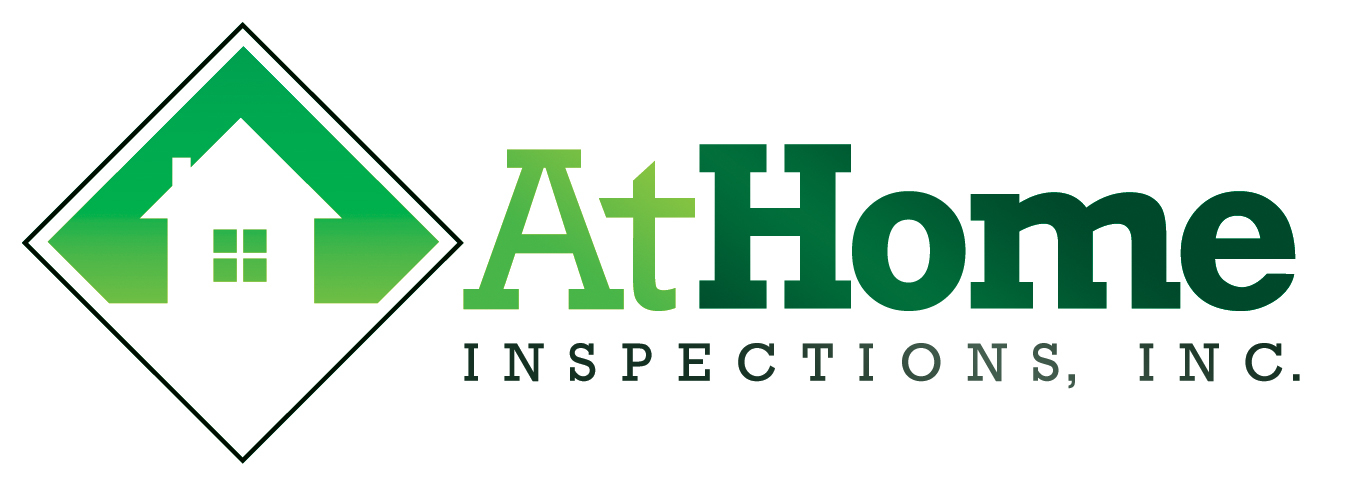
.jpg)

